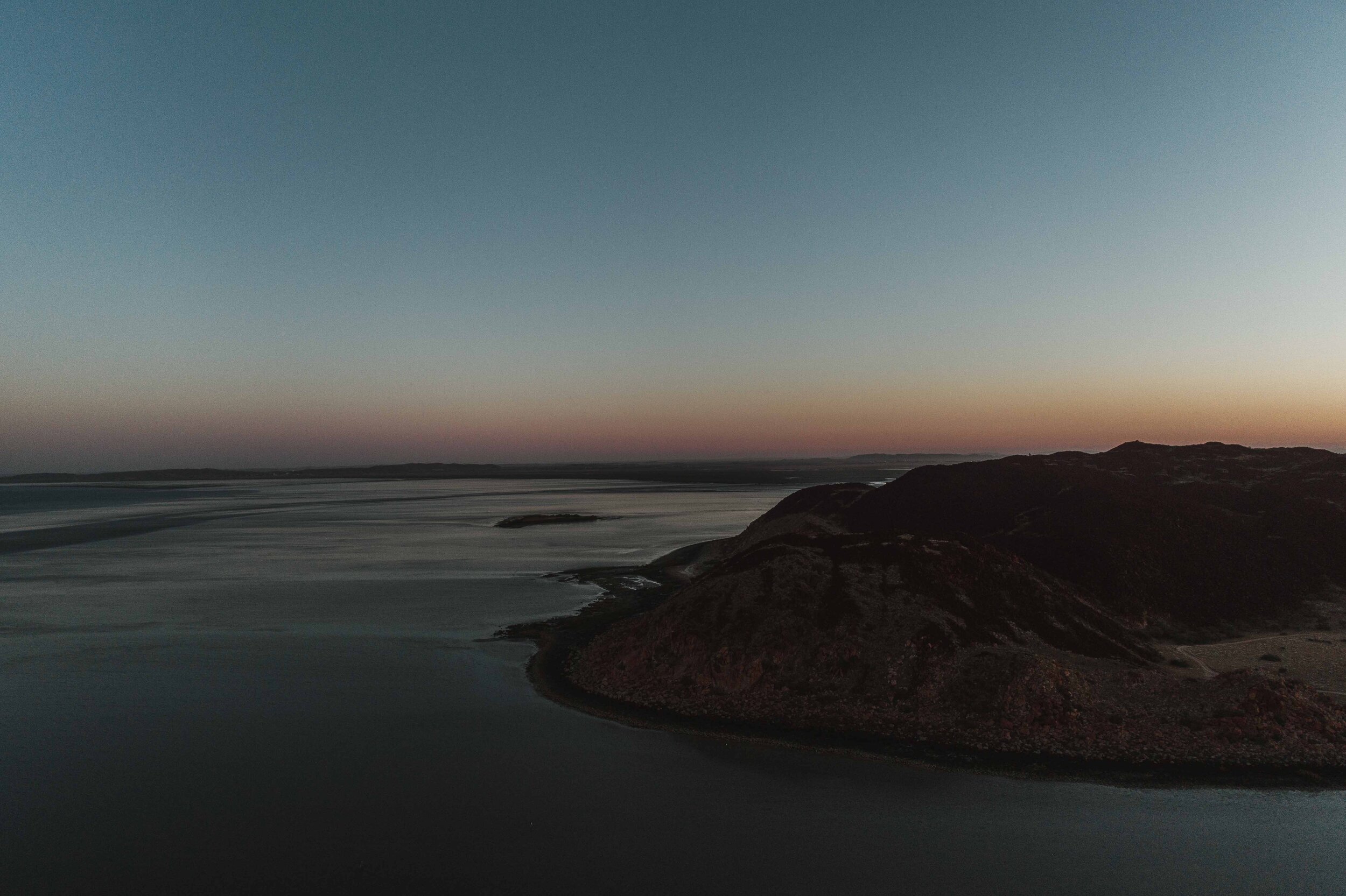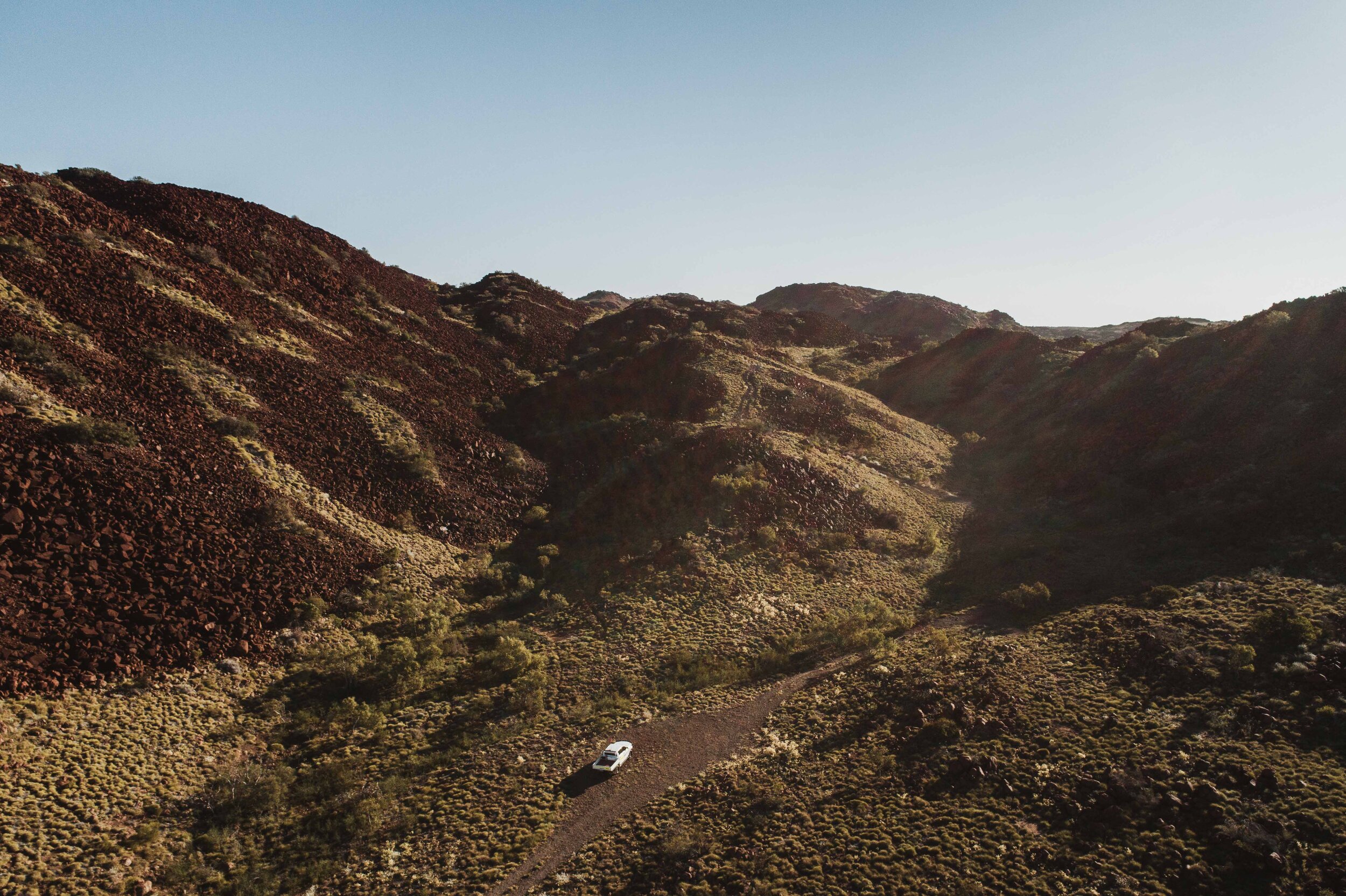Clinton is a descendant of the Ngarluma and Yindjibarndi people, who are the Traditional Owners of the coastal and inland areas of the West Pilbara region encompassing areas such as the City of Karratha, Dampier Archipelago, Murujuga National Park and Millstream-Chichester National Park.
Clinton has spent his entire life learning from his Elder’s and family about the traditional ways of his people including speaking Ngarluma and Yindjibarndi languages, he has also been initiated in his people’s Aboriginal Law Ceremony (Birdarra) and is an active member in his cultural responsibilities of looking after his ngurra (country).
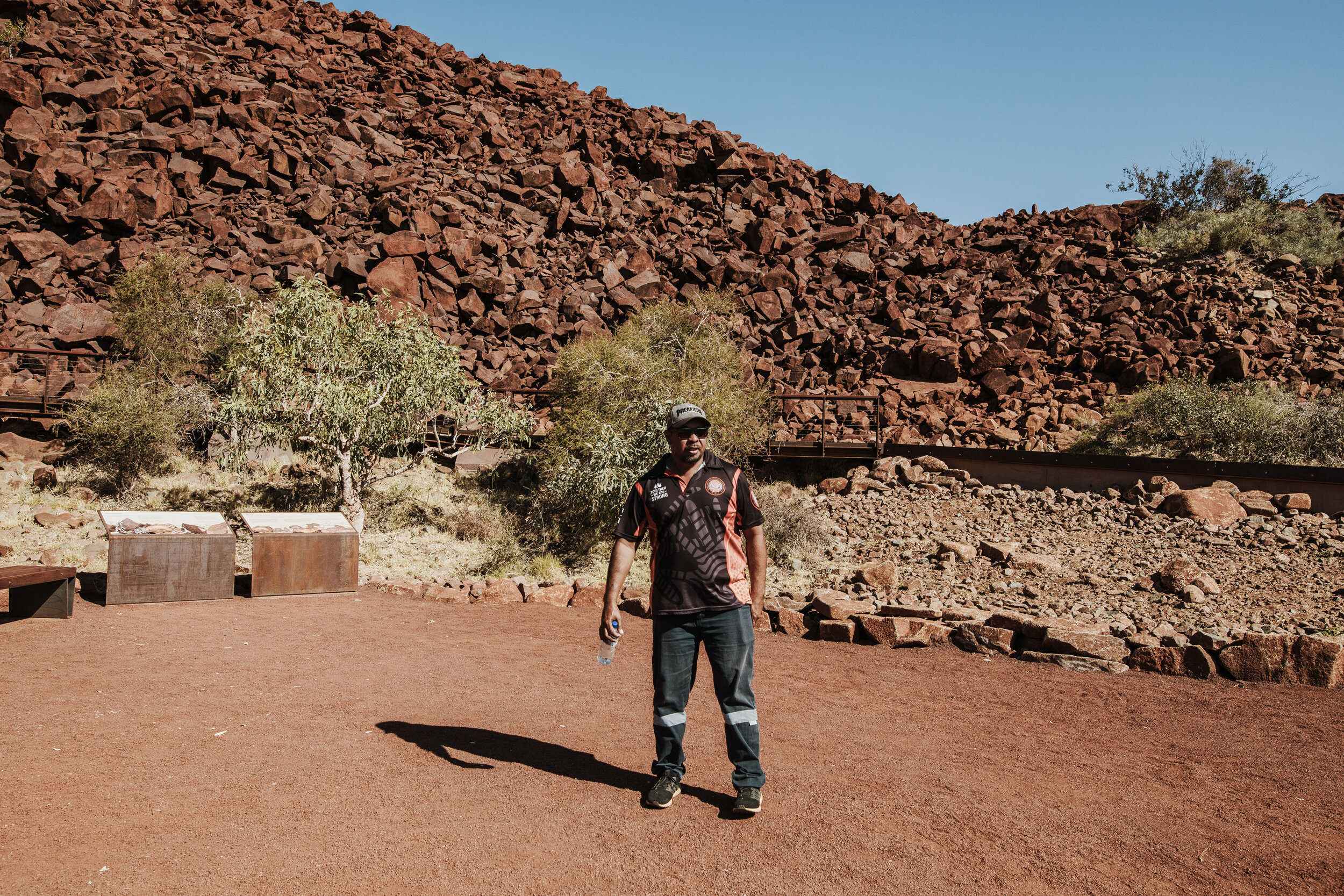
Clinton Walker, a descendant of the Ngarluma and Yindjibarndi people, standing in front of Murujuga National Park and Ngajarli (Deep Gorge), the 100th National Park declared in WA and hosts the largest concentration of rock art in the world.
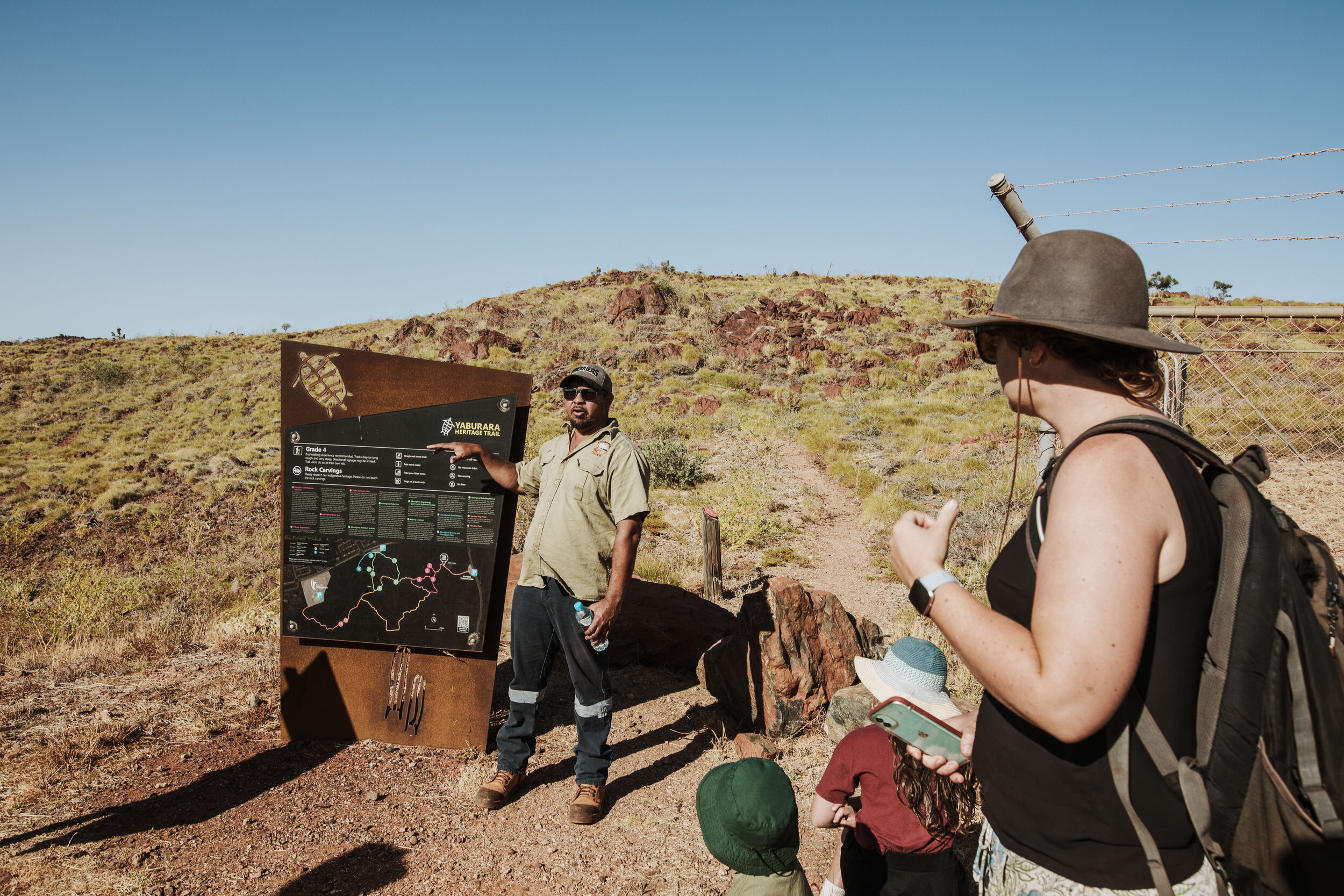
Clinton with a group at the start of the Yaburara Heritage Trail.
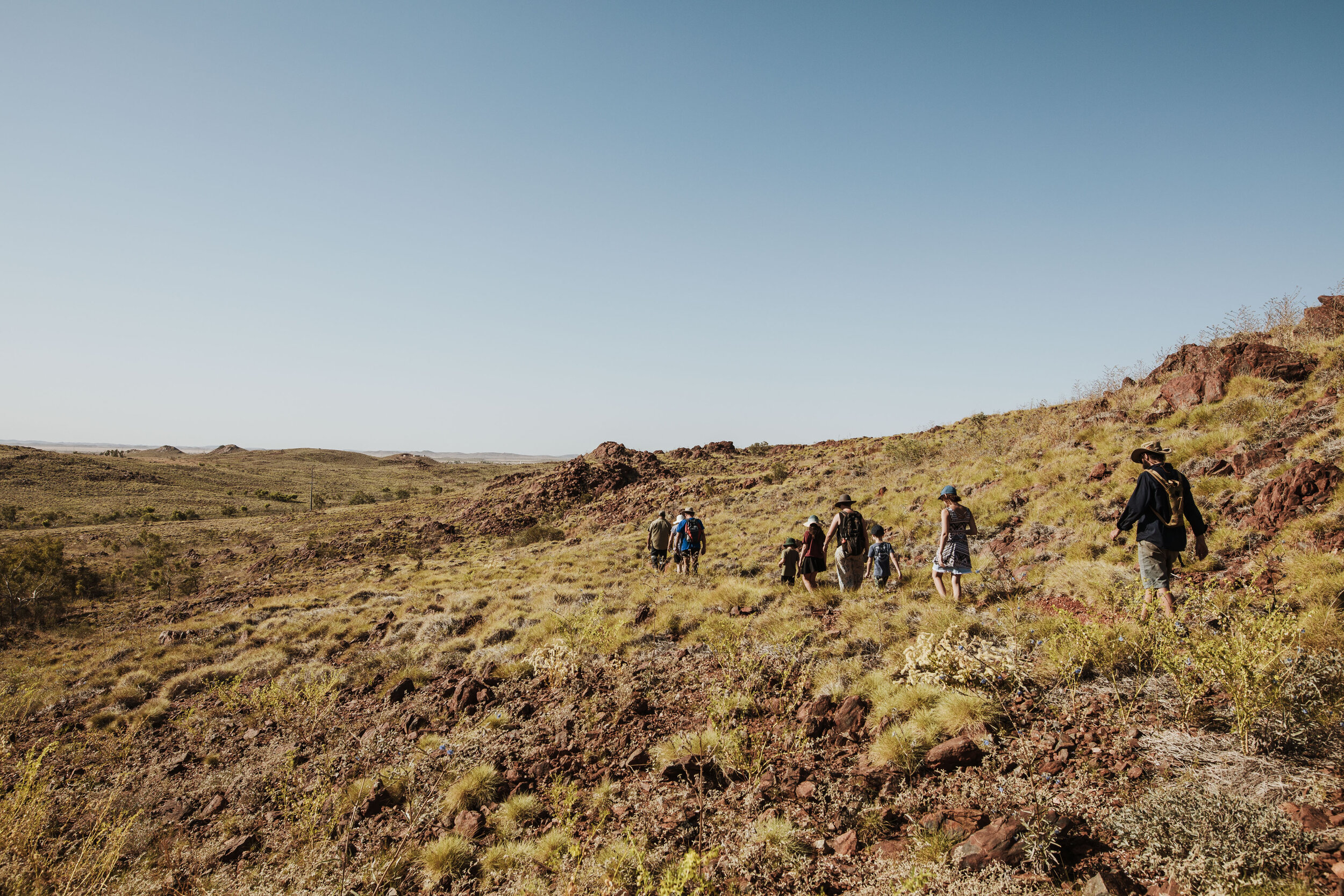
Clinton leads a group of people through the Yaburara Heritage Trail in Karratha. The Yaburara Heritage Trail is a 3.5 kilometre grade 4 walk highlighting the Karratha district’s natural history and cultural heritage and in particular the heritage of the Traditional Owners of the land, the Ngarluma people, in honour of the Yaburara people.
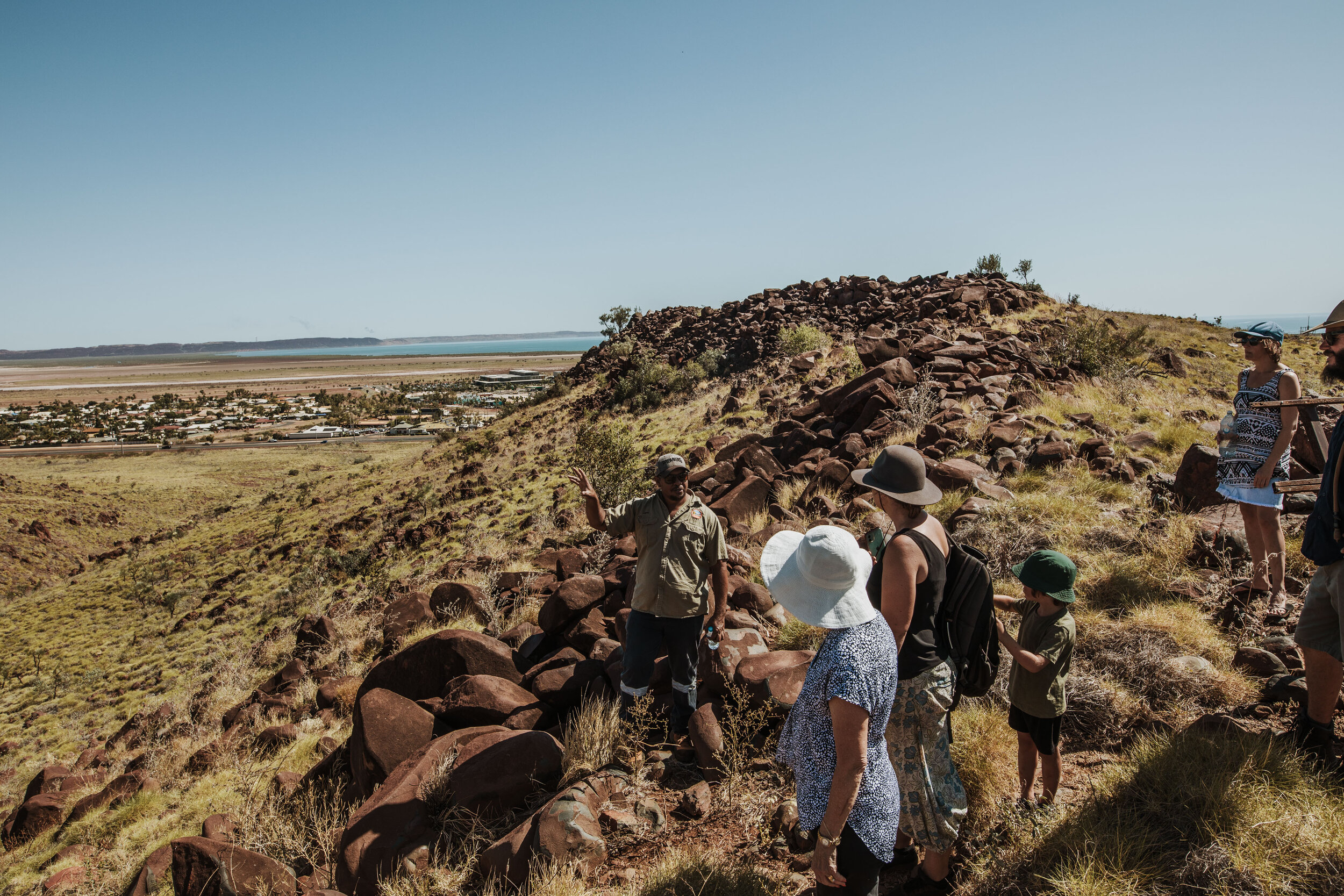
Clinton tells a story at Yaburara Heritage Trail.

Gawiwarnda (Corky Caltrop). The bark of this branch would be shaved and crushed then thrown into a small pool where there was fish. A sleep like toxin was released by this plant shaving in the water that would force the fish to sleep, knock them out. They would flout to the surface where the people would gather as many as they needed to feed. After a minute or so, the remaining fish would come out of the sleep and swim away.
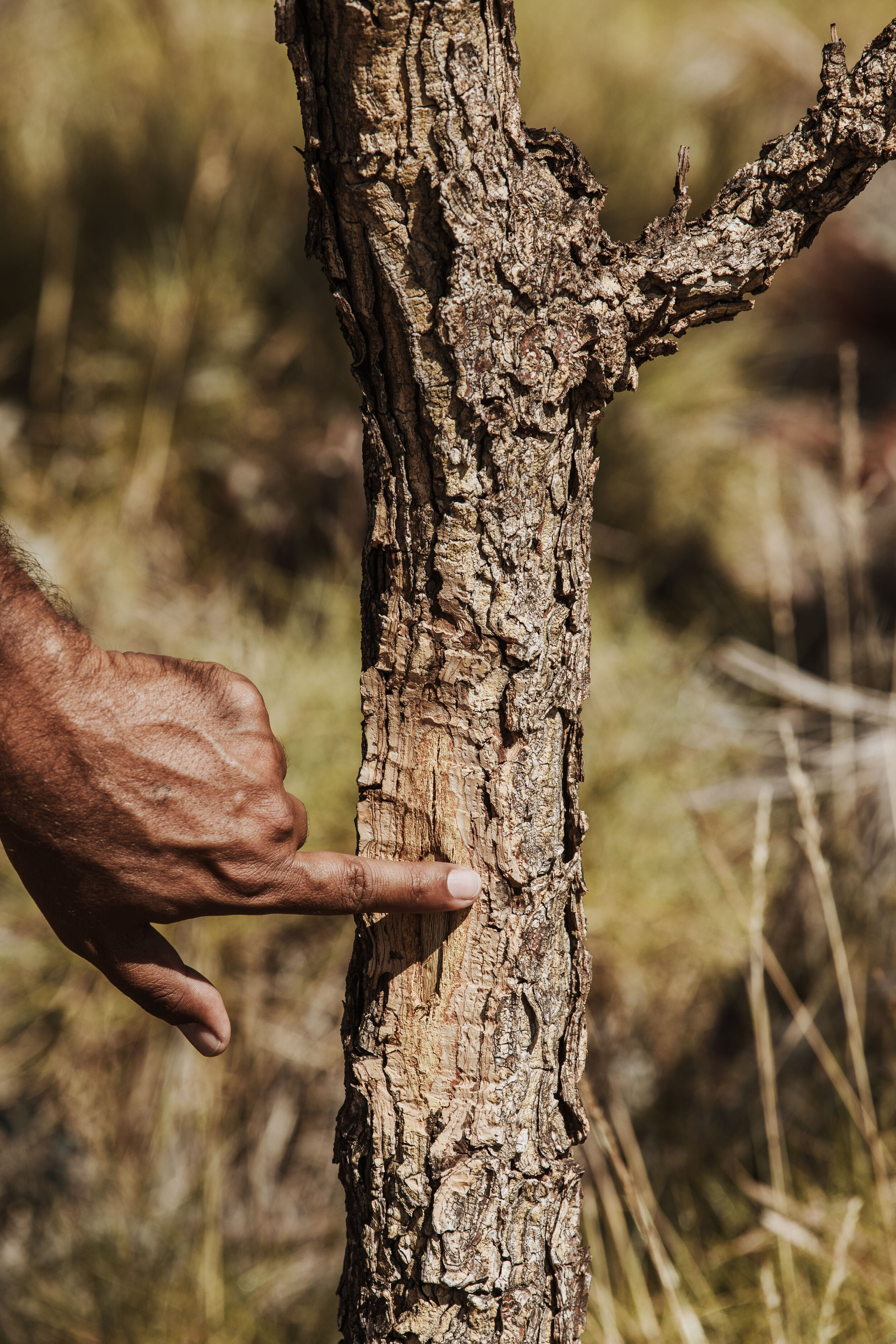
Jingu (Caustic Bush). This plant has medicinal purposes. The resin can be highly caustic and cause burns.
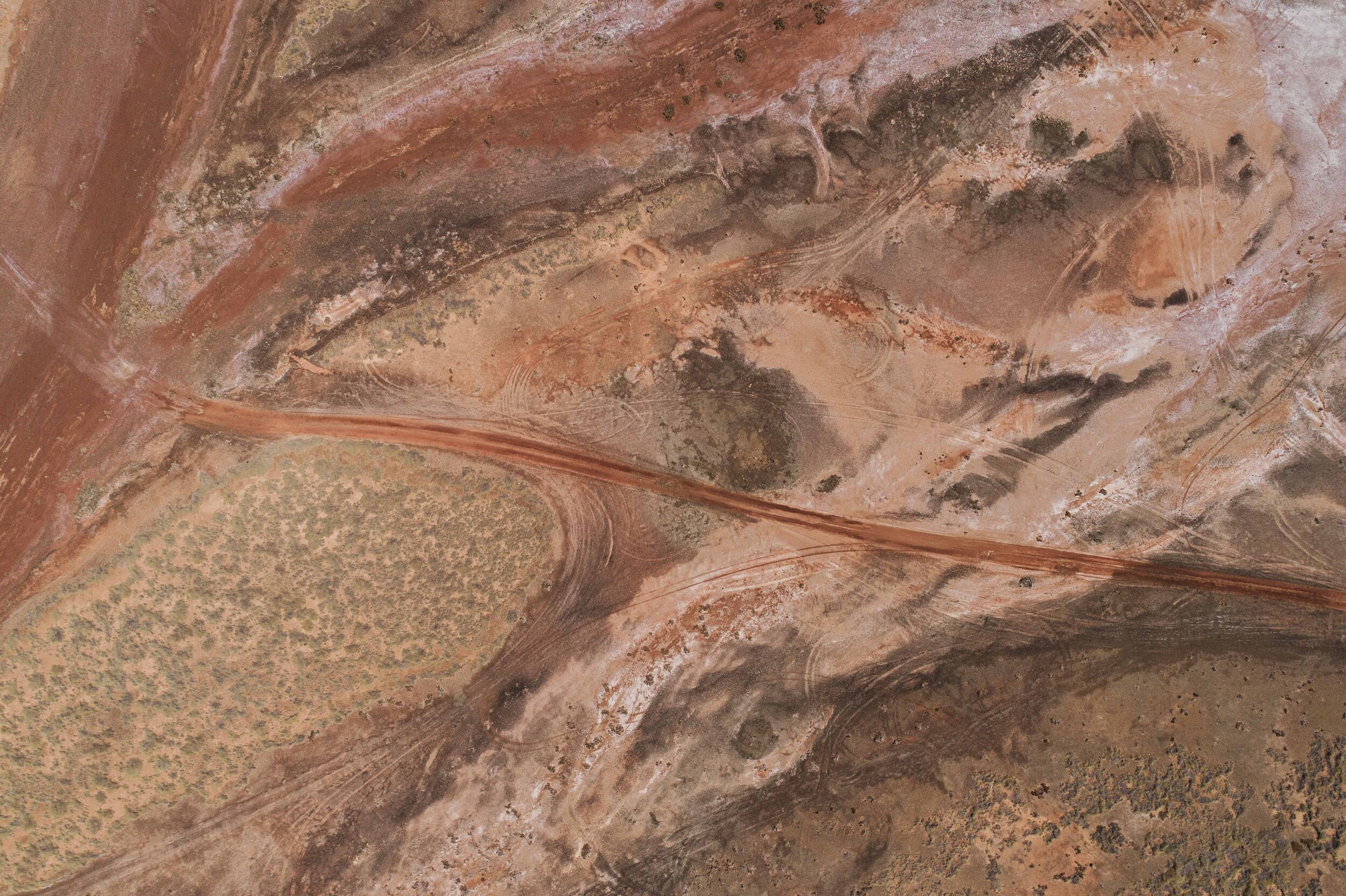
Salt lakes between Roebourne and Cossack.
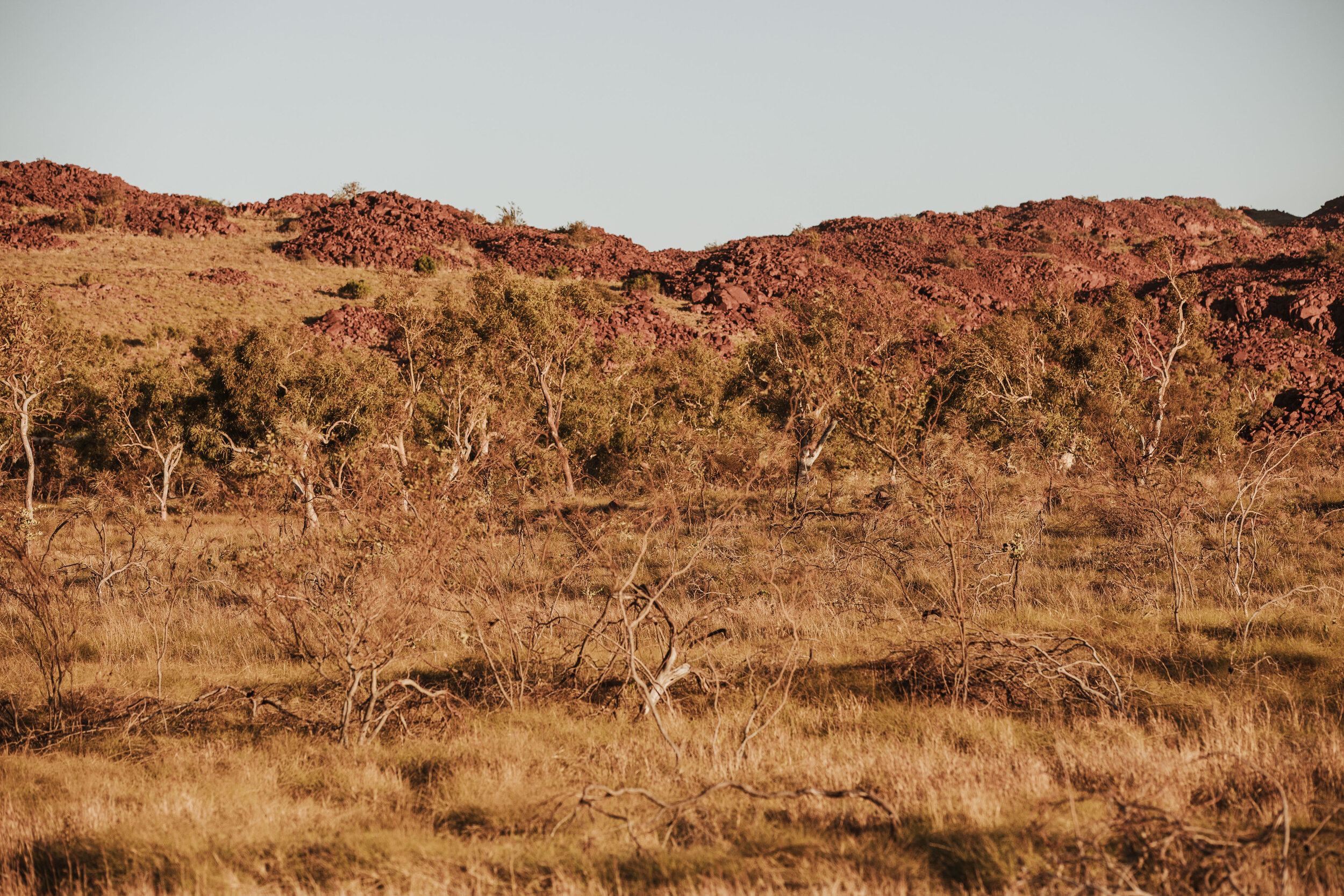
An image of the terrain at Burrup Murujuga

Barlgarringu (Bloodwood).
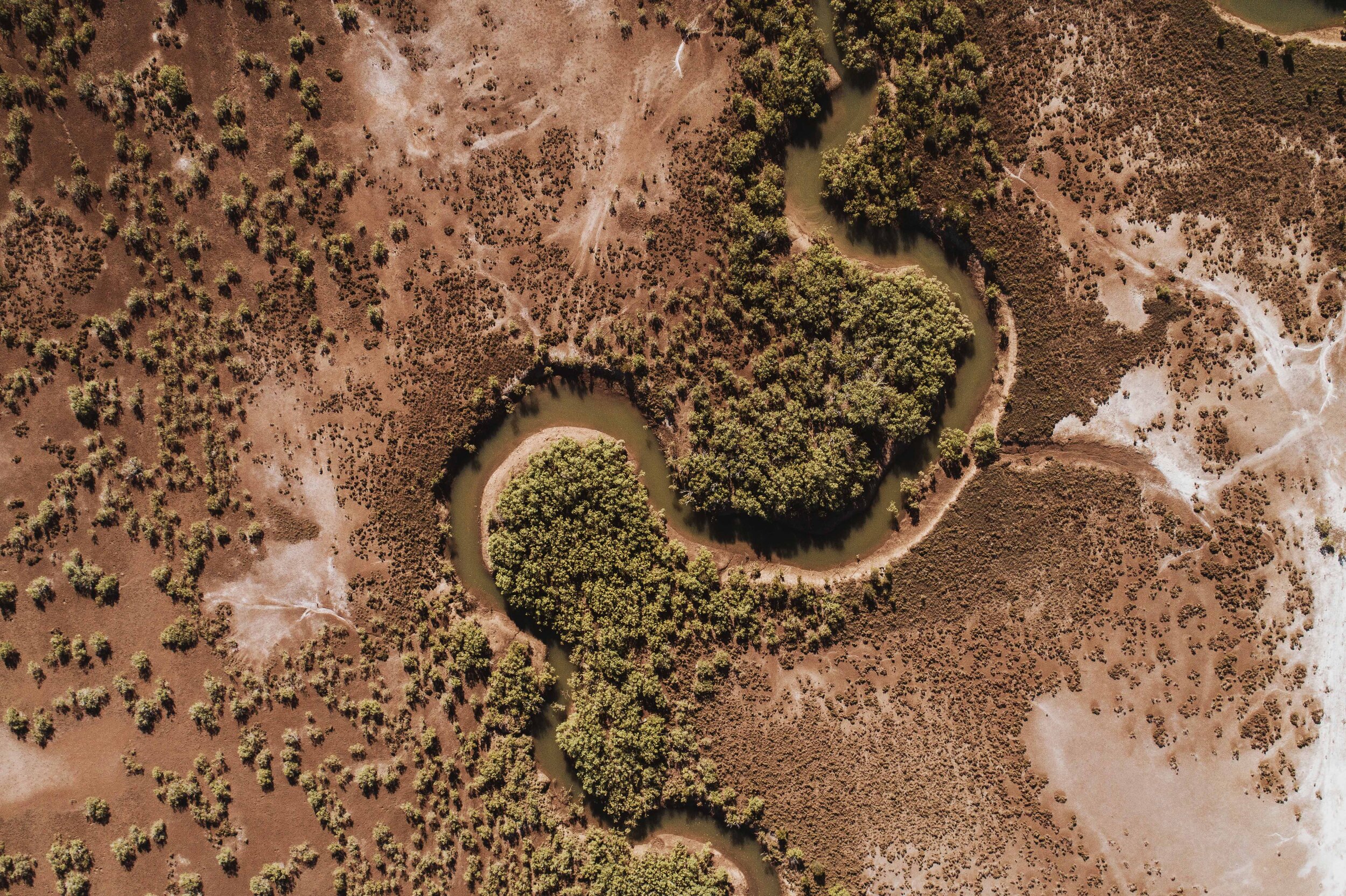
Somewhere between Roebourne and Cossack.
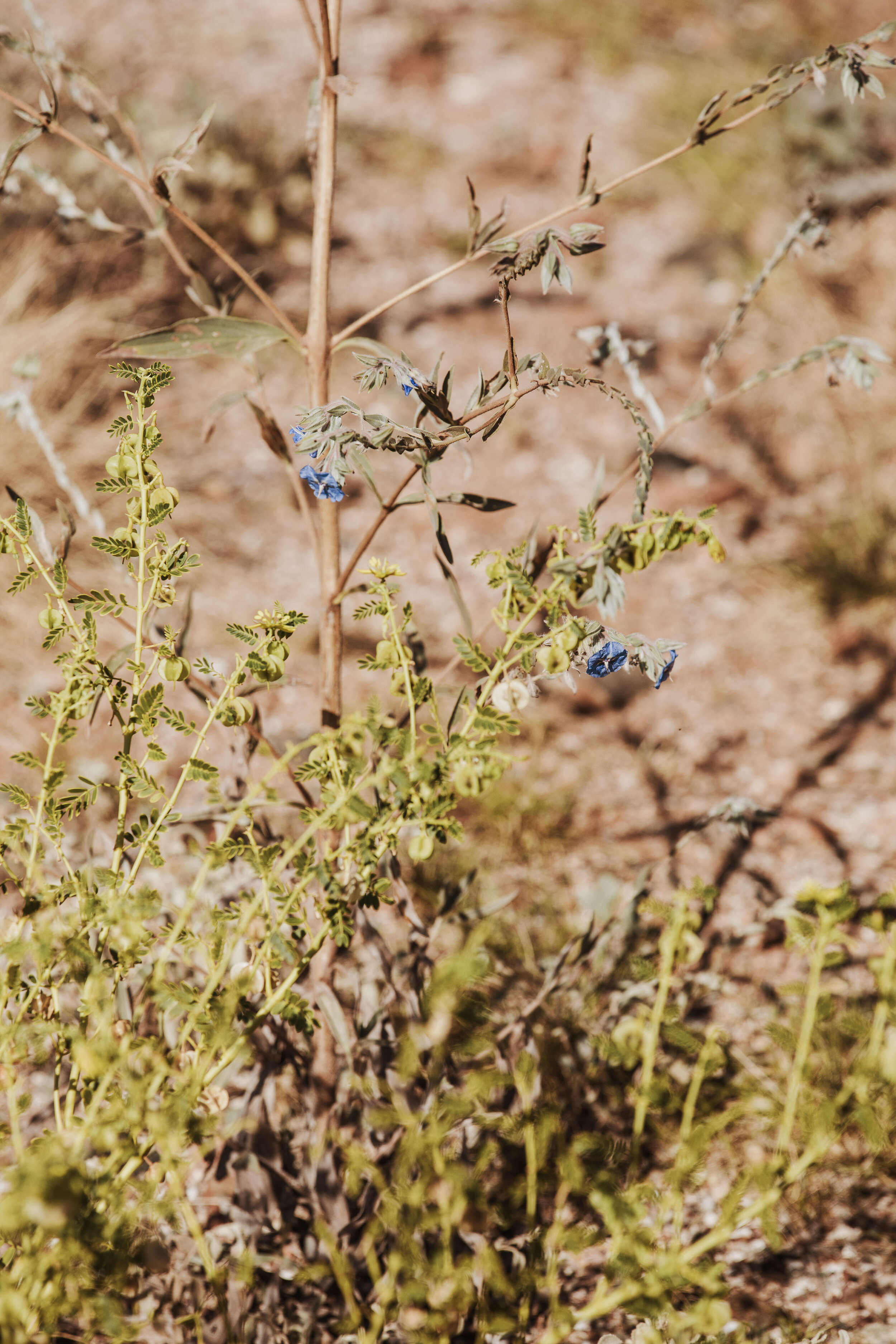
Jaba Jaba (Bluebell).
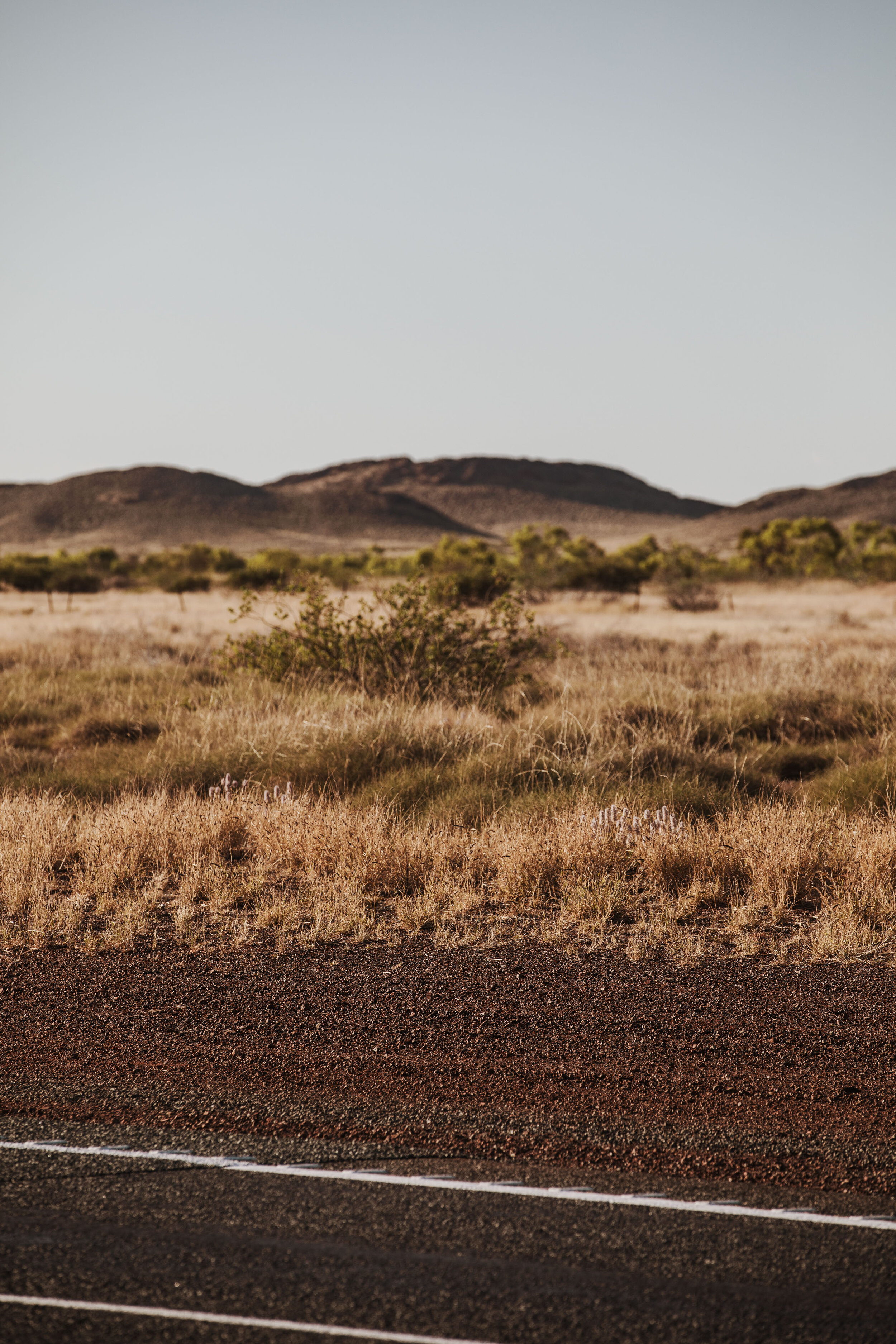
Mada (Bush Potato) on the side of the highway between Karratha and Roebourne

Kanji Ganji.
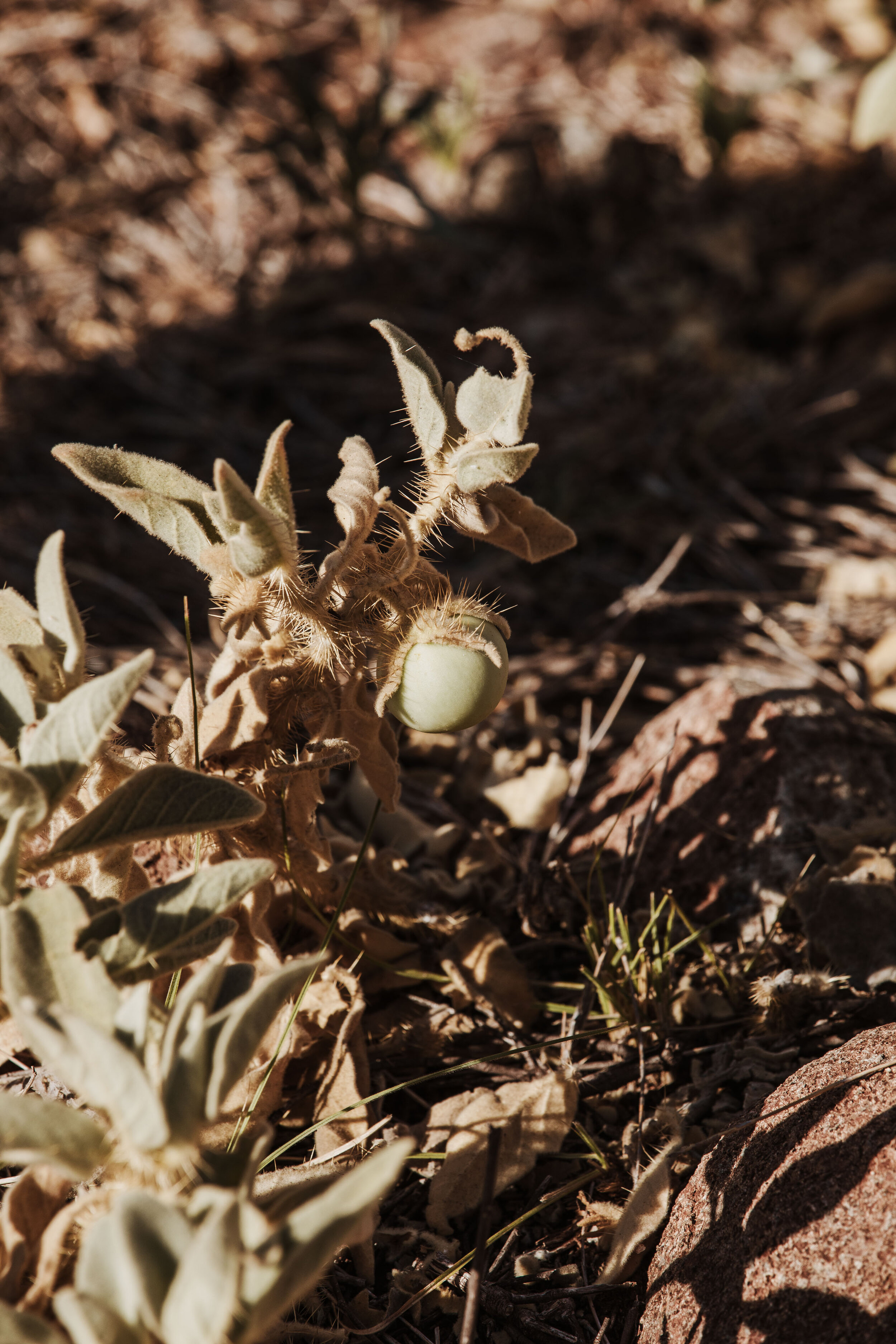
Garlumbu (Bush Tomato).
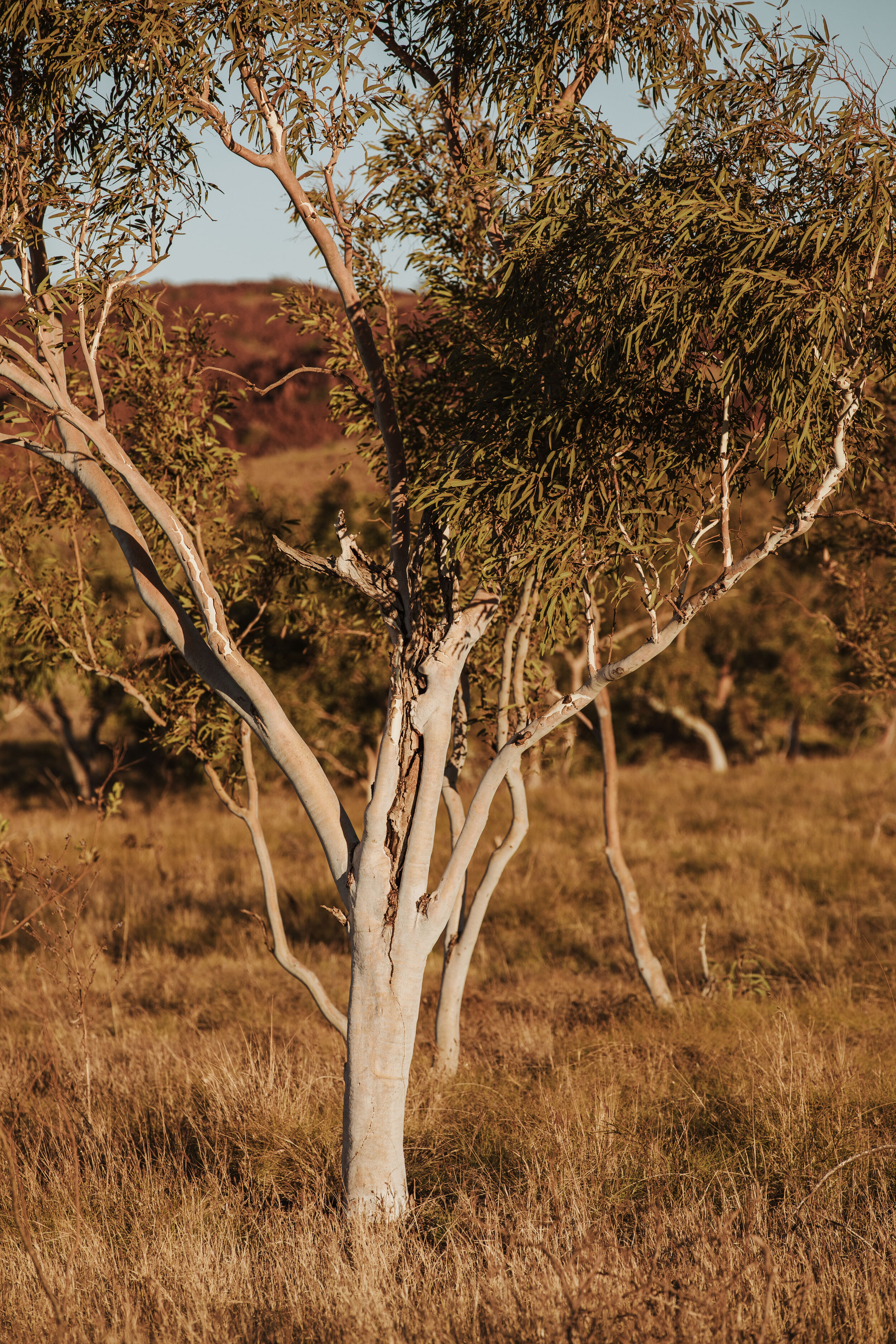
Yamarrara (Collabah).

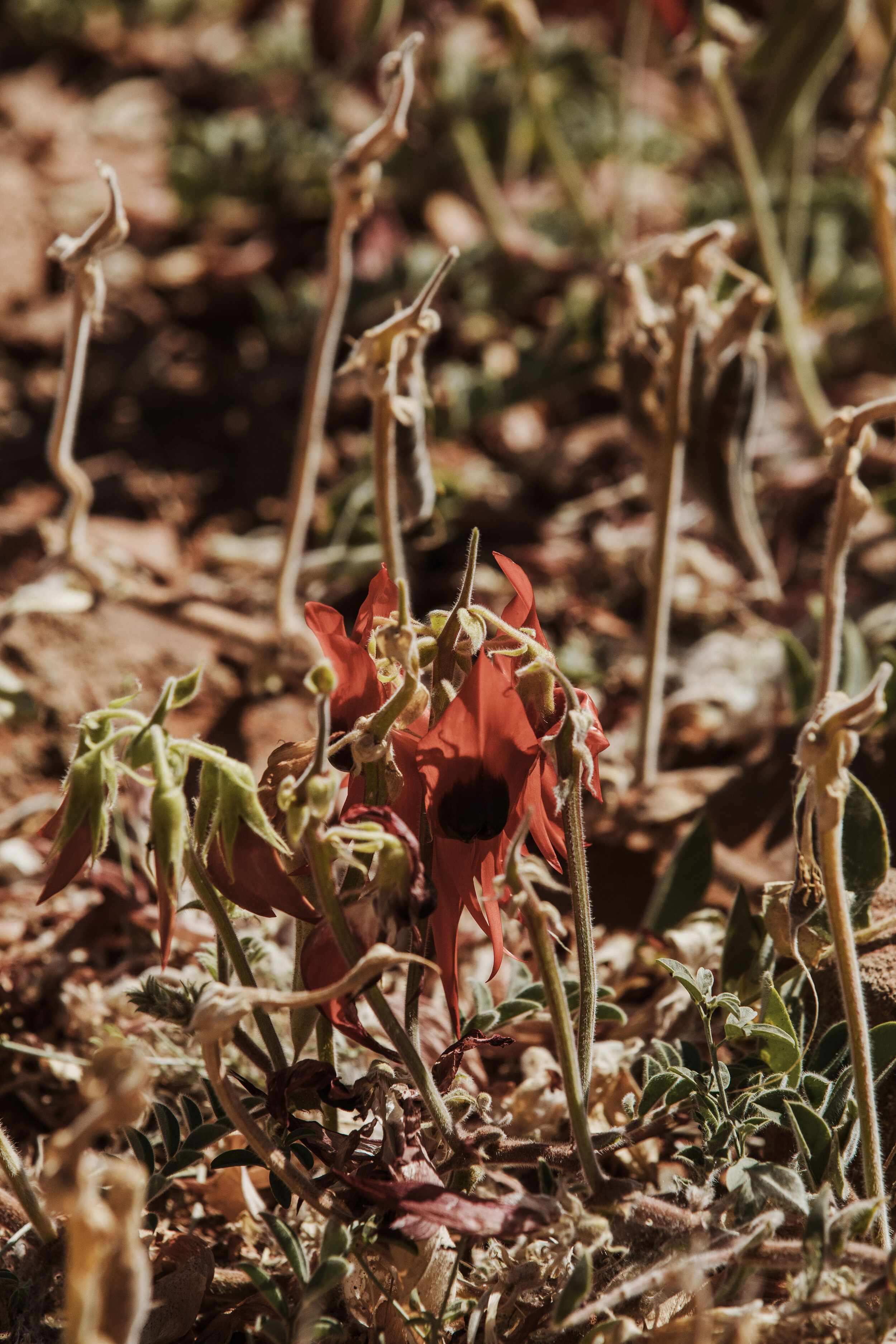
Thurla Marda (Desert Pea).
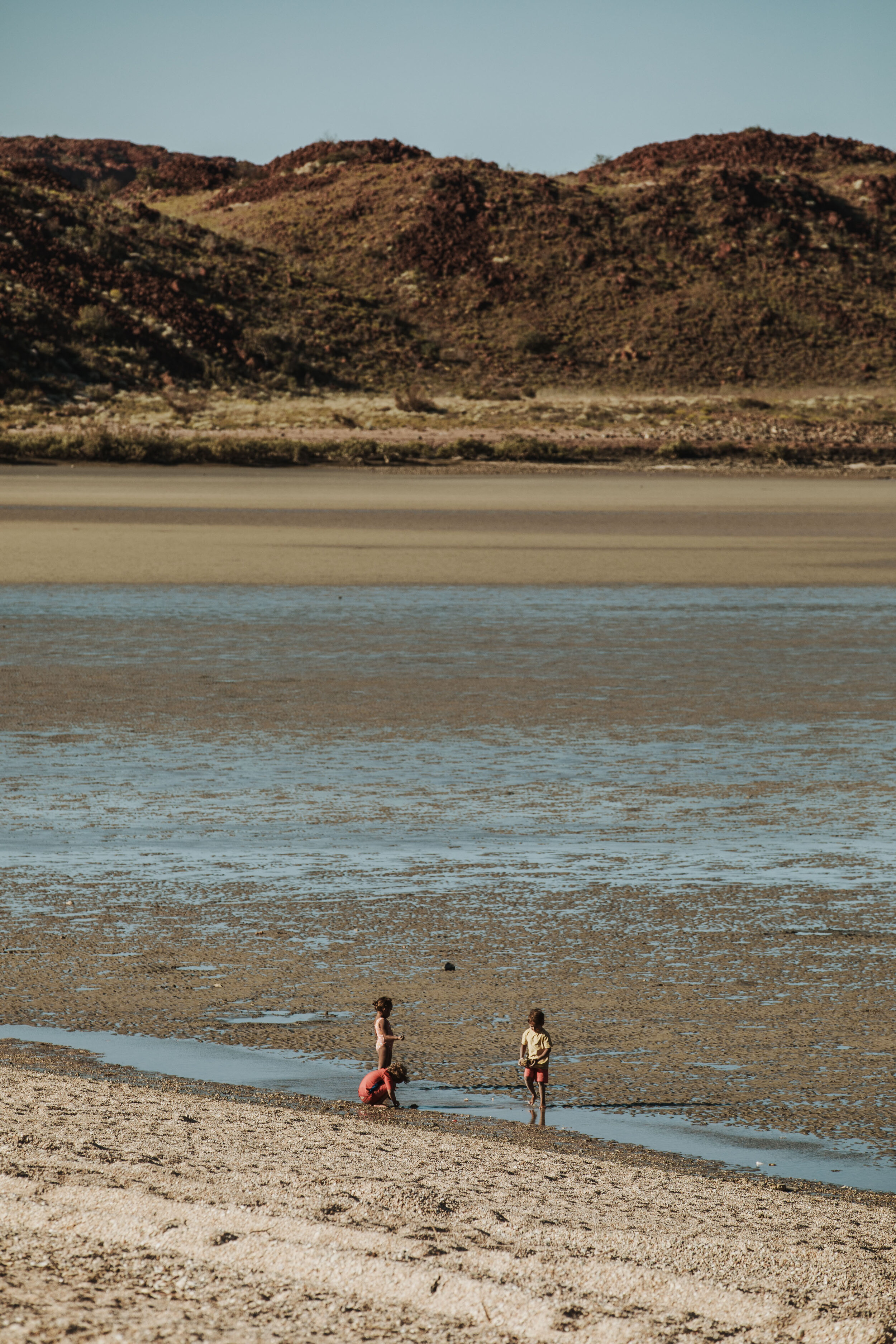
Kids enjoying the low tide at Hearsons Cove.
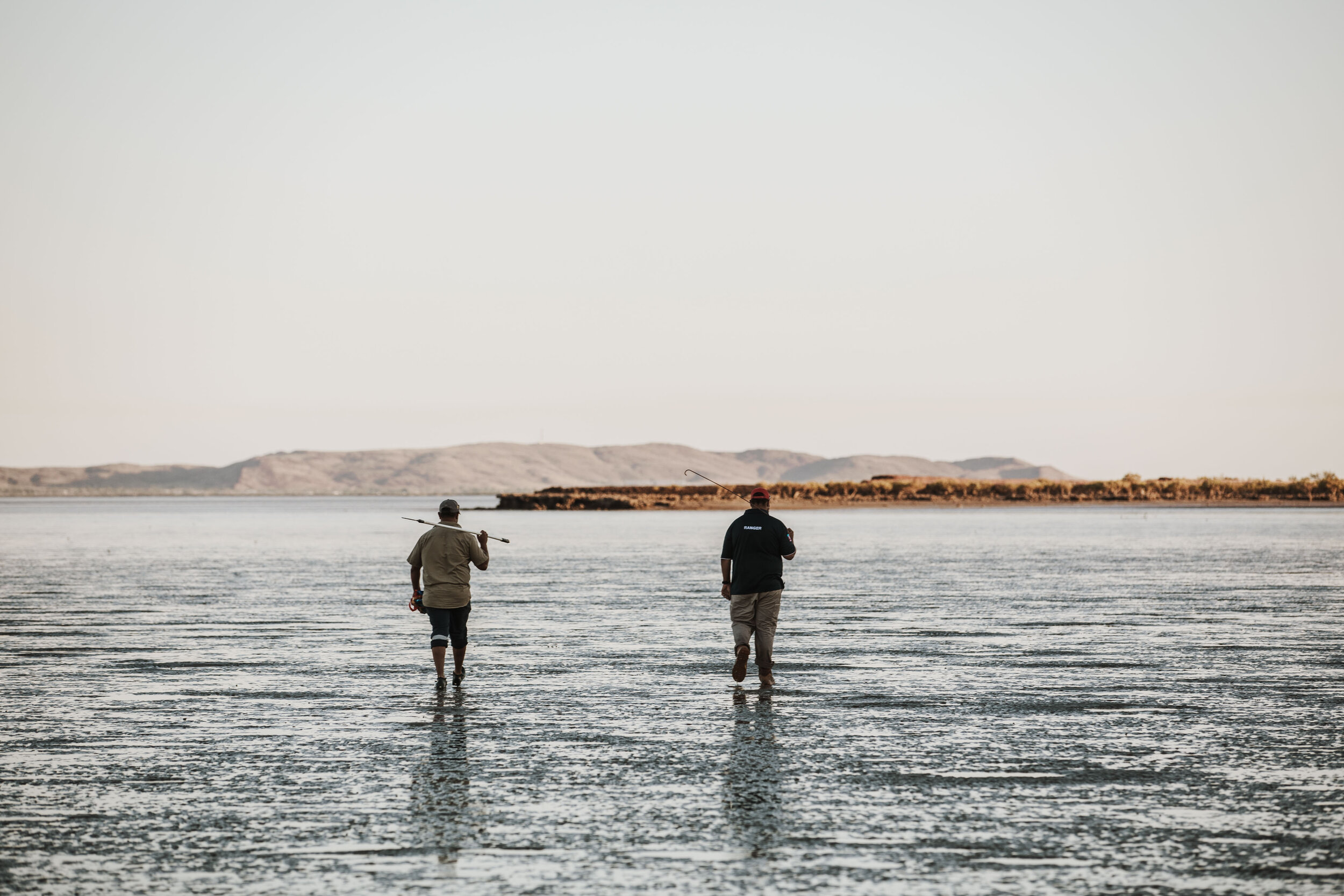
Clinton and his nephew out Mud Crabbing during low tide at Turtle Island.
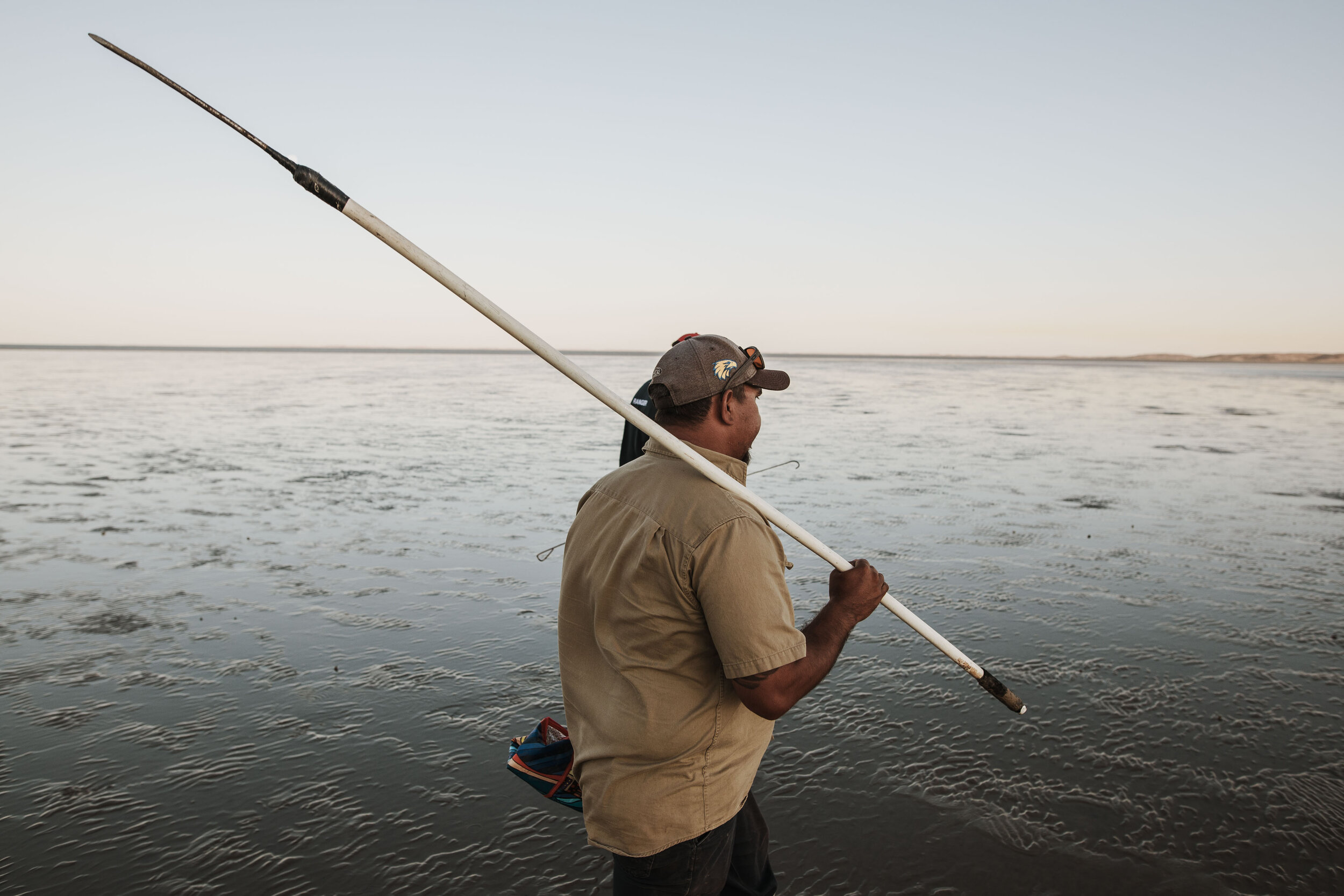
Clinton and his nephew out Mud Crabbing during low tide at Turtle Island.
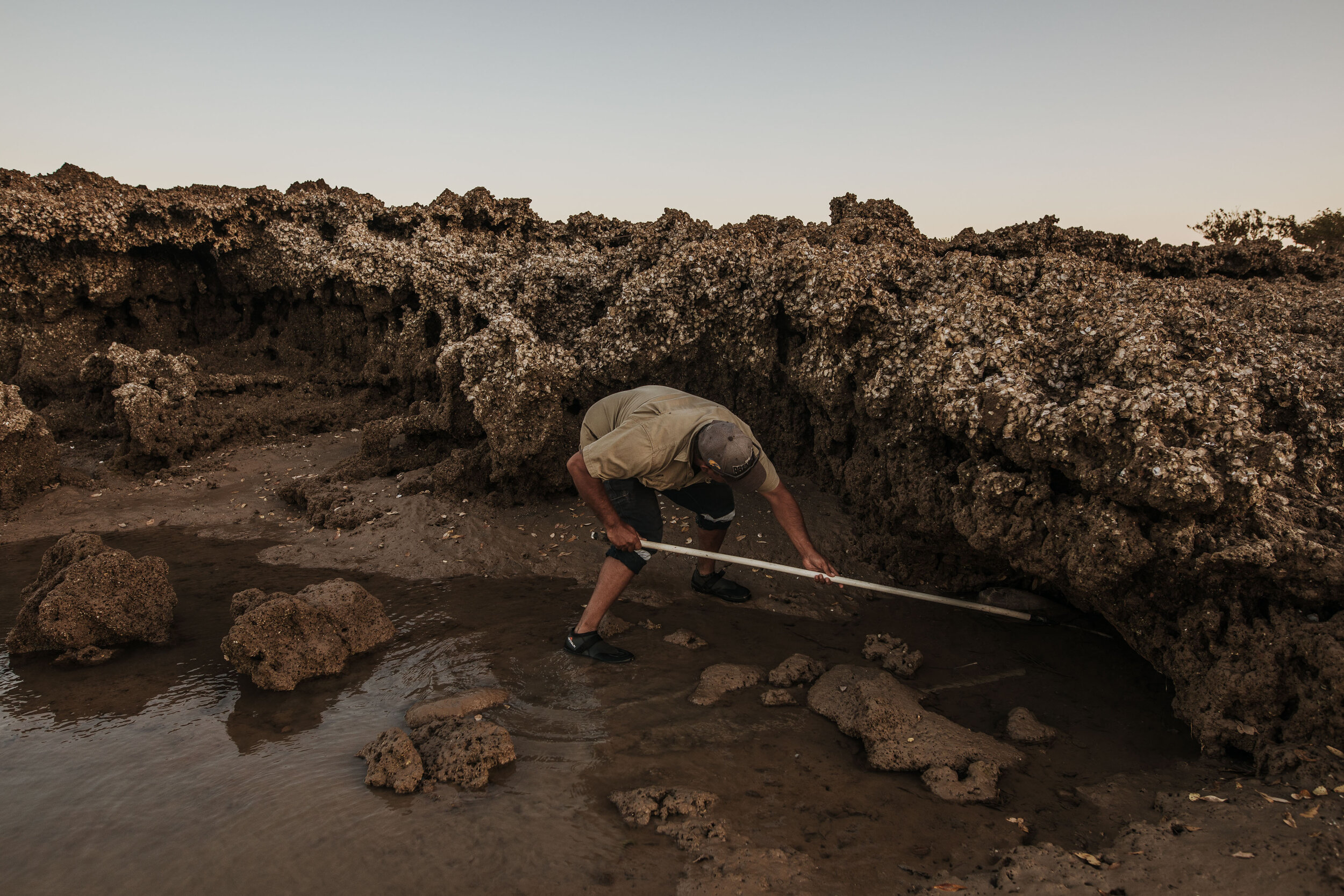
Clinton attempting to spear a Mud Crab at Turtle Island.
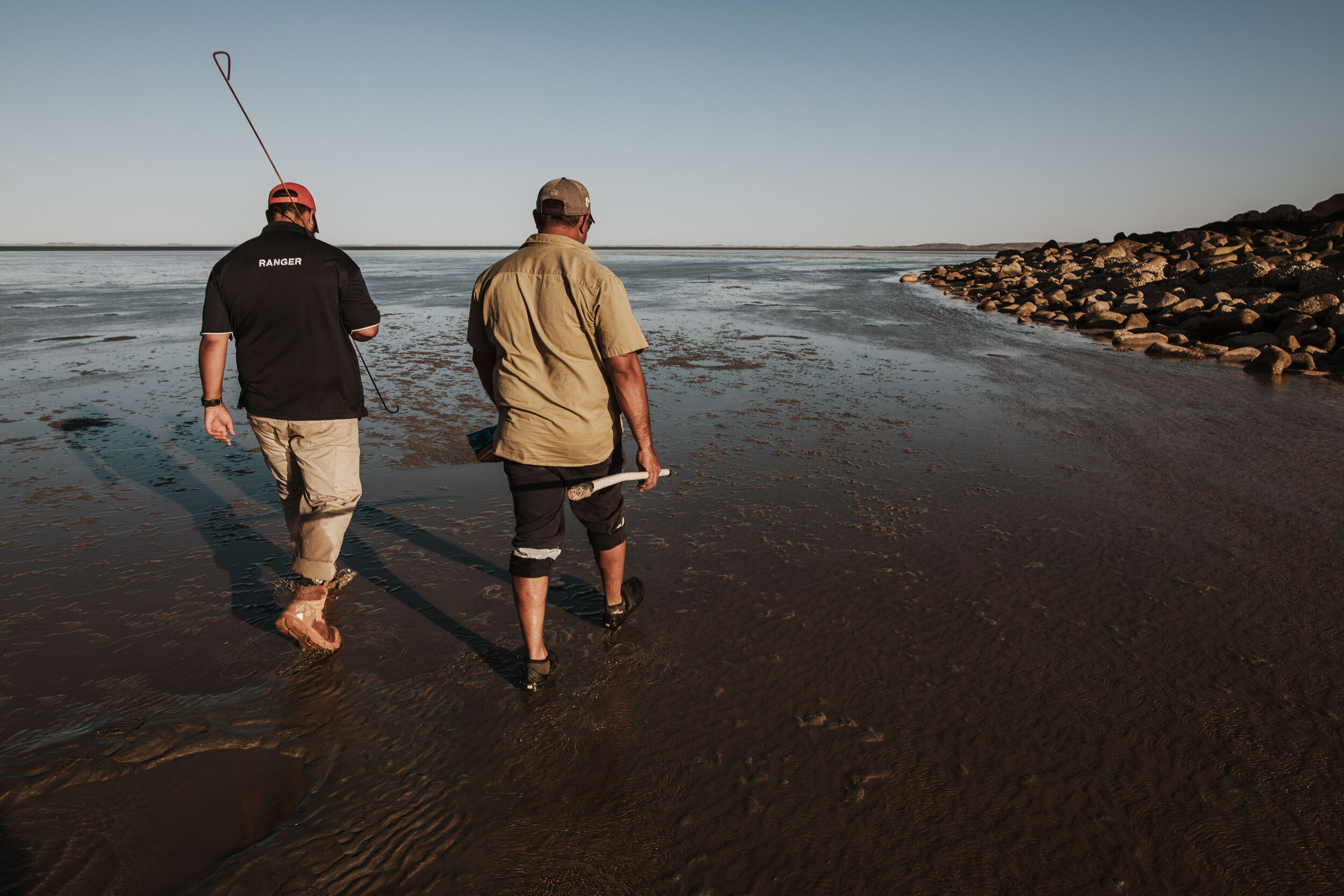
Clinton and his nephew out near Turtle Island during low tide.

Clinton searching for Mud Crabs.
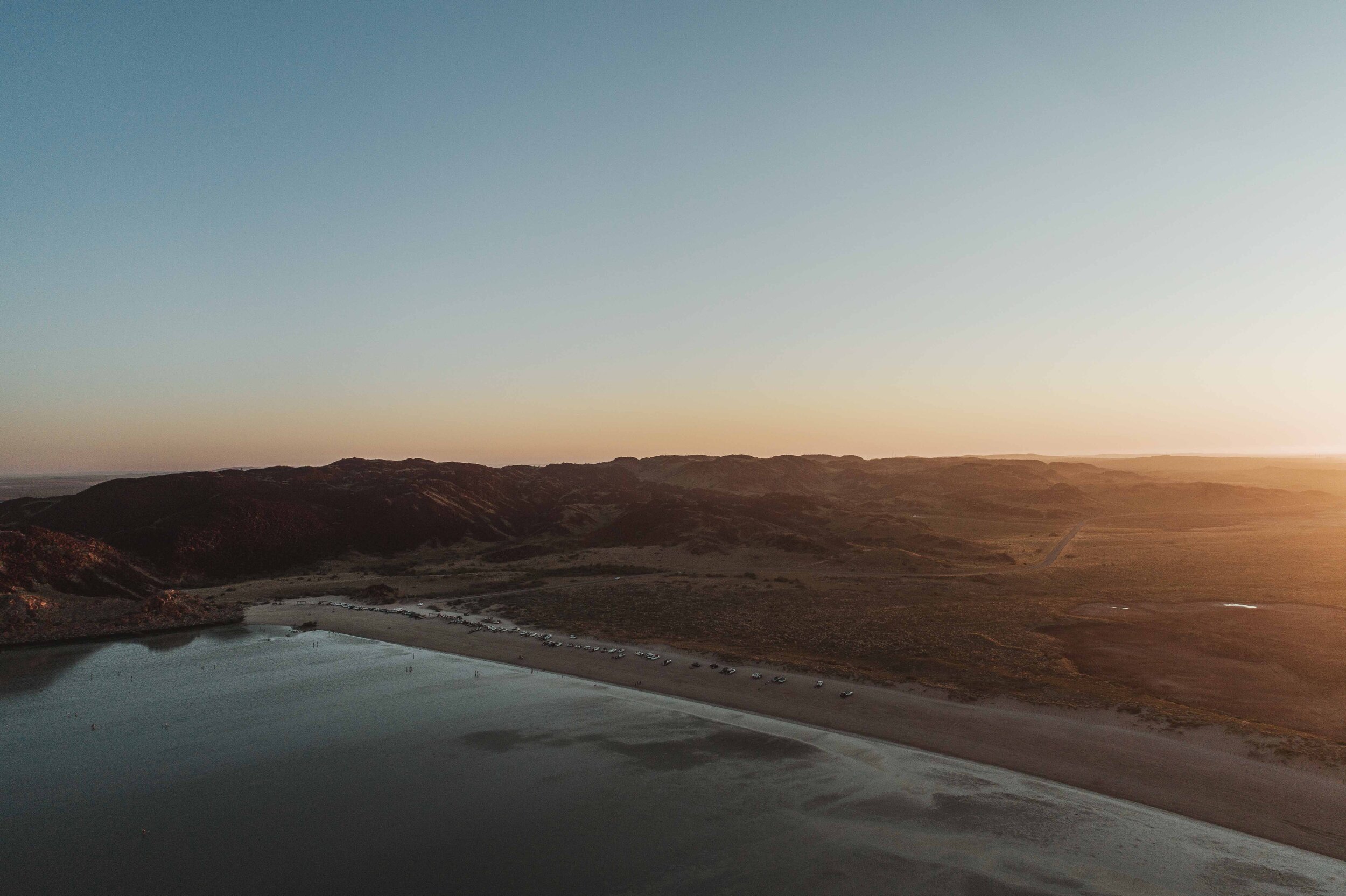
Locals gather for the Staircase to the Moon. Occurring on full moon dates, from March to November along the coast of northern WA, the Staircase to the Moon is a beautiful optical illusion. Only created when the full moon reflects on exposed mudflats at extremely low tide, it forms a magical staircase reaching up to the moon.
Clinton started Ngurrangga Tours to educate and immerse people in the ways of his culture and history so that they could understand more about Pilbara Aboriginal culture and country. Ngurrangga Tours mostly operates from Karratha and offers visitors a unique experience of the Pilbara through the eyes of a traditional owner.
Guests are given the opportunity to learn about bush foods and medicines, explore stunning locations, view and understand ancient rock art in the world’s largest outdoor rock art gallery, hear traditional stories and listen to traditional songs sung using the wirra (boomerang).
Clinton is passionate about raising the profile of the Burrup Peninsula; located in Murujuga National Park. It is one of Australia’s most significant heritage sites and an important cultural place for Aboriginal people. The Burrup Peninsula is on the National Heritage register and is home to up to a million Aboriginal rock carvings, some dating back 40,000 years. Despite this, it is relatively unknown worldwide and even in Australia.
Murujuga—translated as “hip bone sticking out”. On the far northwest coast of Australia, the red, rocky Burrup Peninsula juts into the sea from the port town of Dampier. Together with the surrounding islands of the Dampier archipelago and the waters in between, this is Murujuga country, as it’s known in the local Ngarluma-Yaburara language.
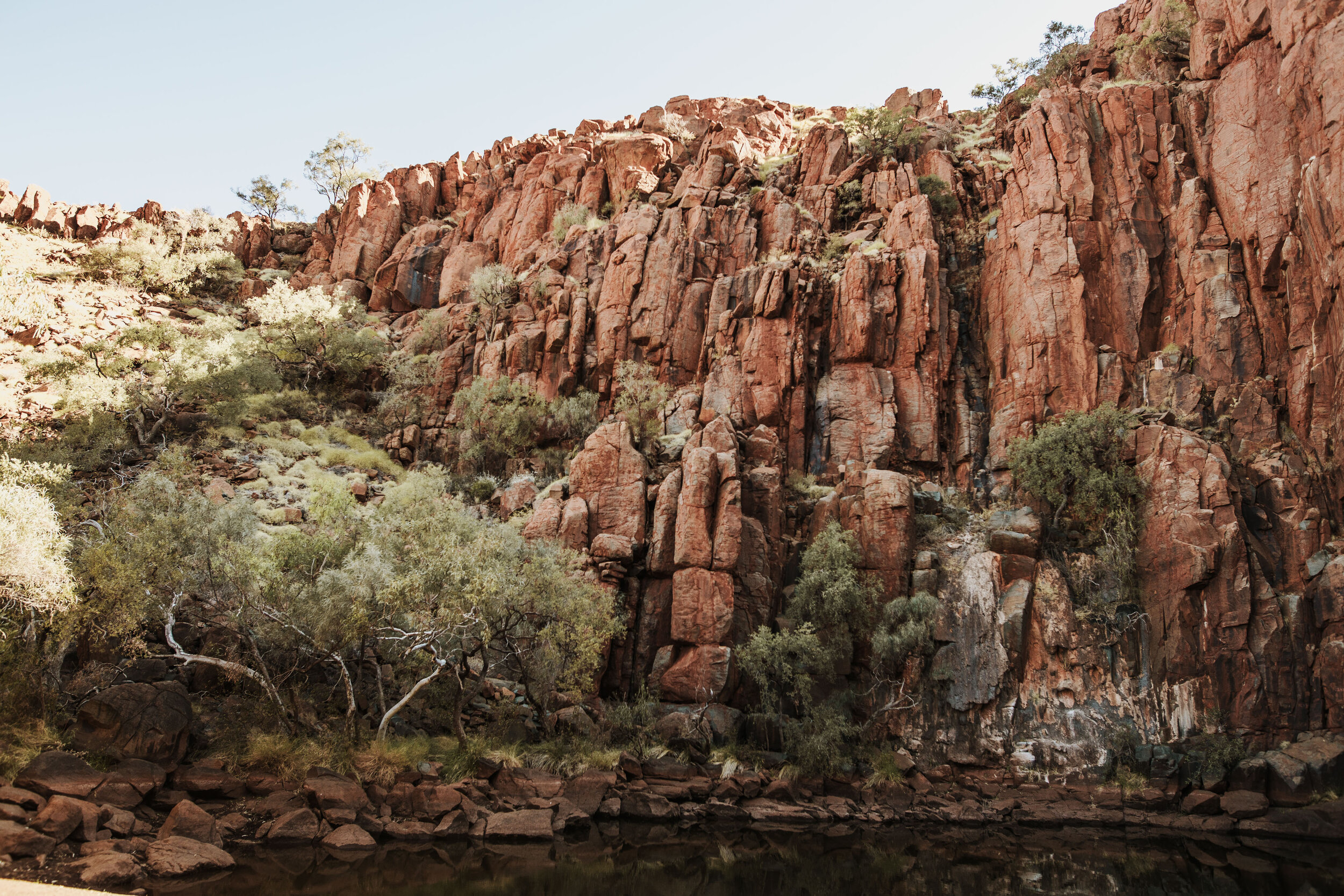
Python Pool is nestled into the Chichester Range at the base of a seasonal waterfall.
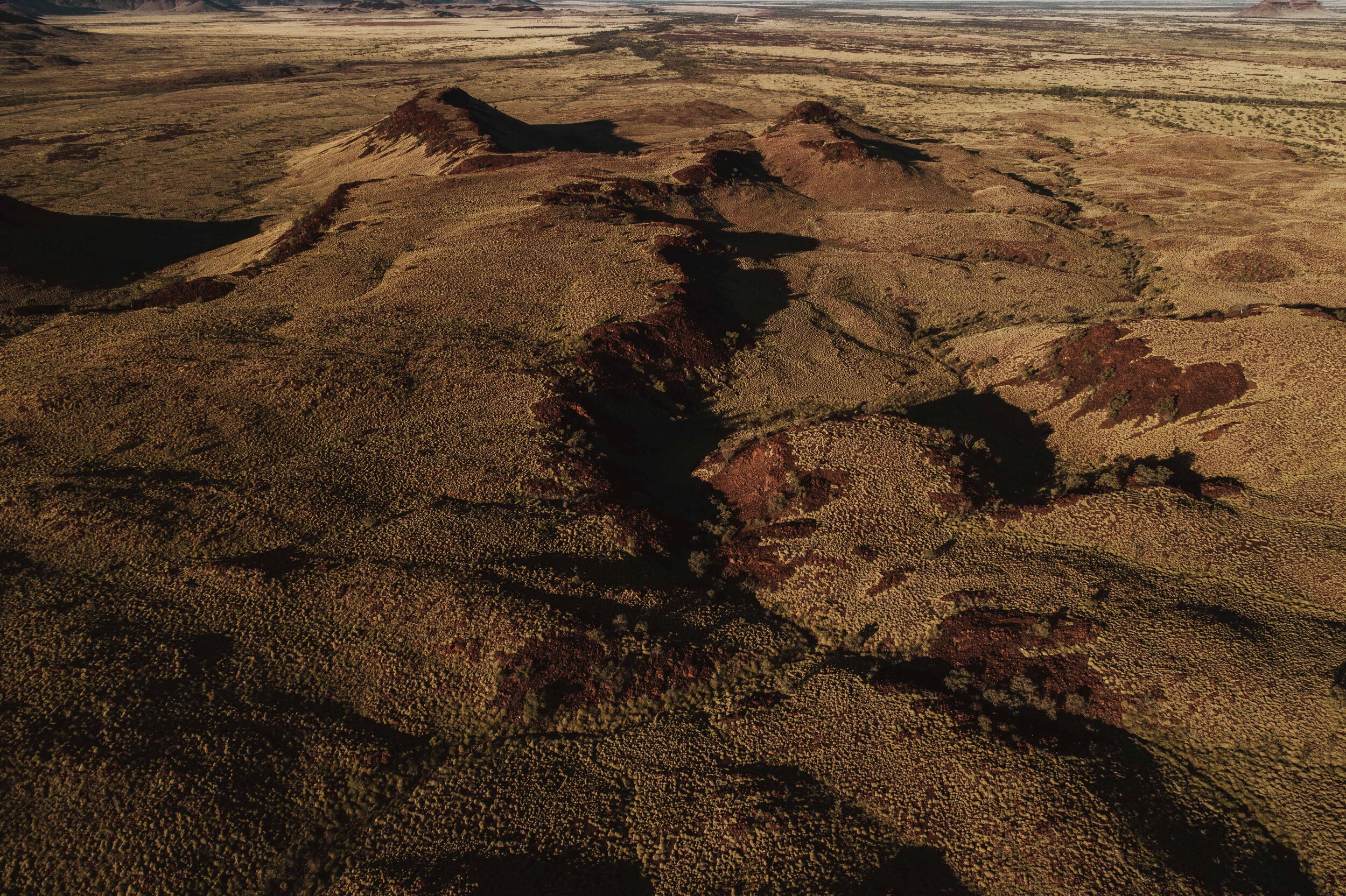
The heartland of the Yindjibarndi people, the park is of great Aboriginal significance as it is the home of the mythological serpent, the ‘Warlu’. The reserve is believed to hold almost two million cubic litres of water covering nearly 2,000 square kilometres – creating lush pools of great cultural significance.
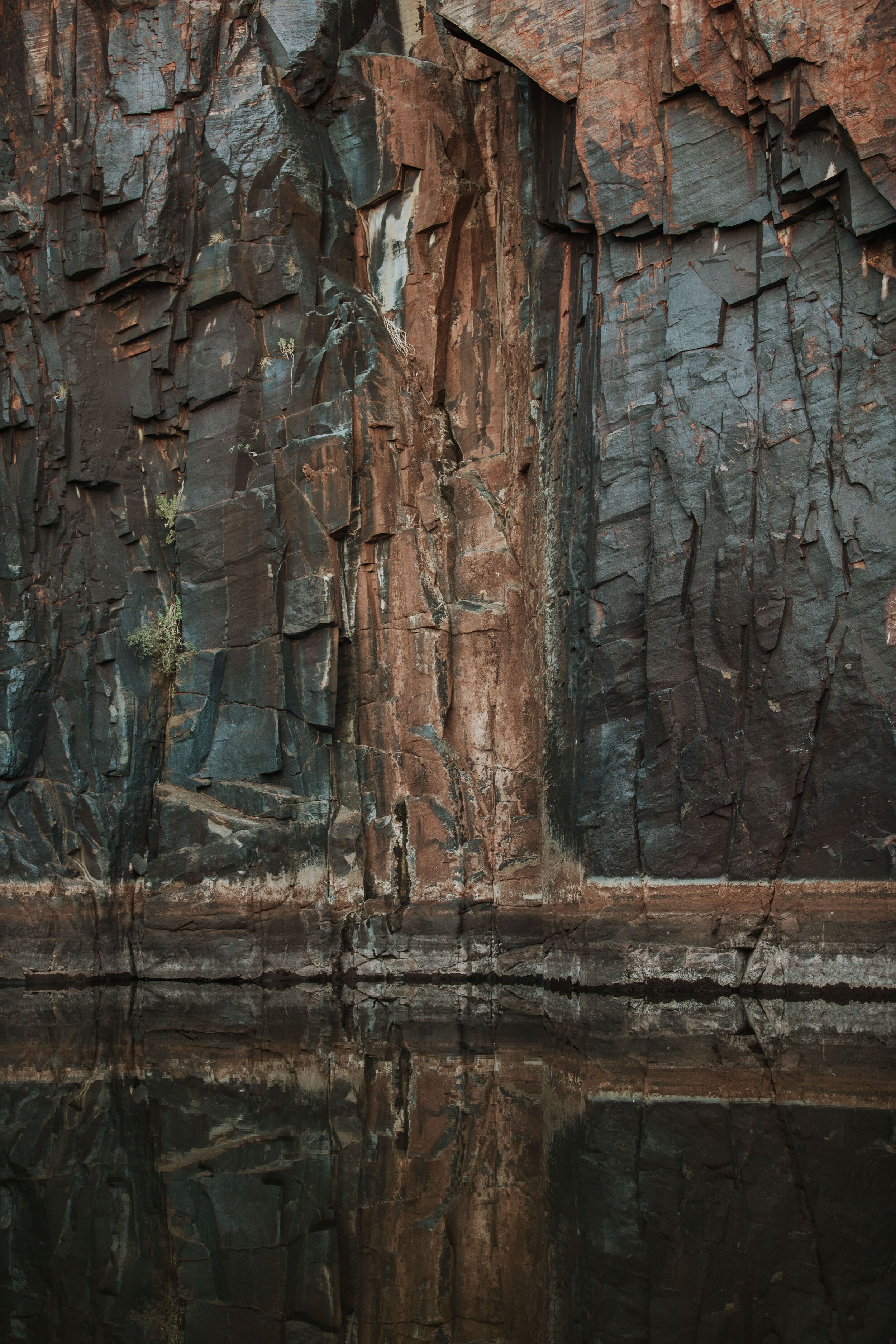
Remnants of a waterfall at Python Pool.

Last light at Python Pool.
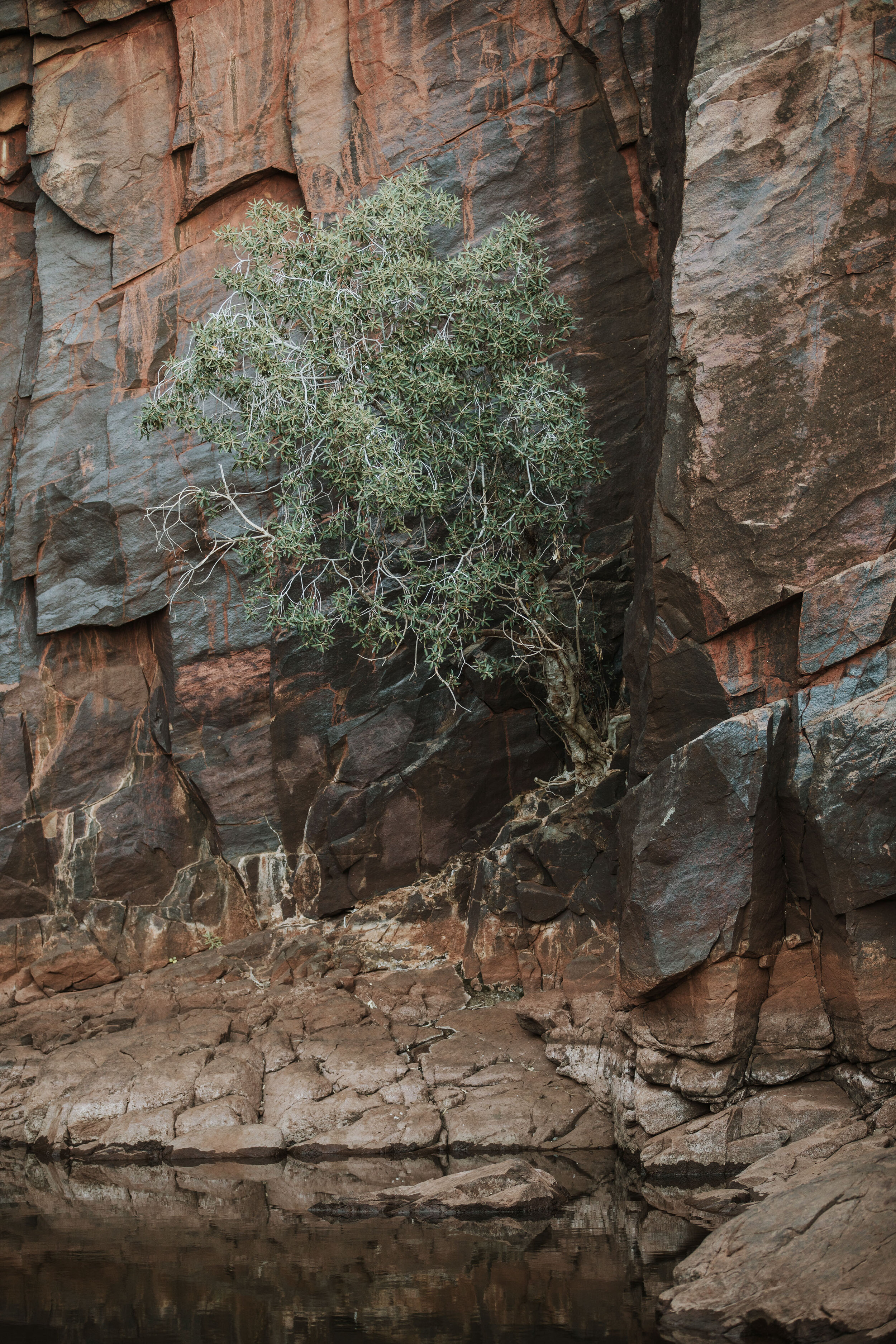
A Fig tree at Python Pool.

Clinton leads a group through the Yaburara Heritage Trail.
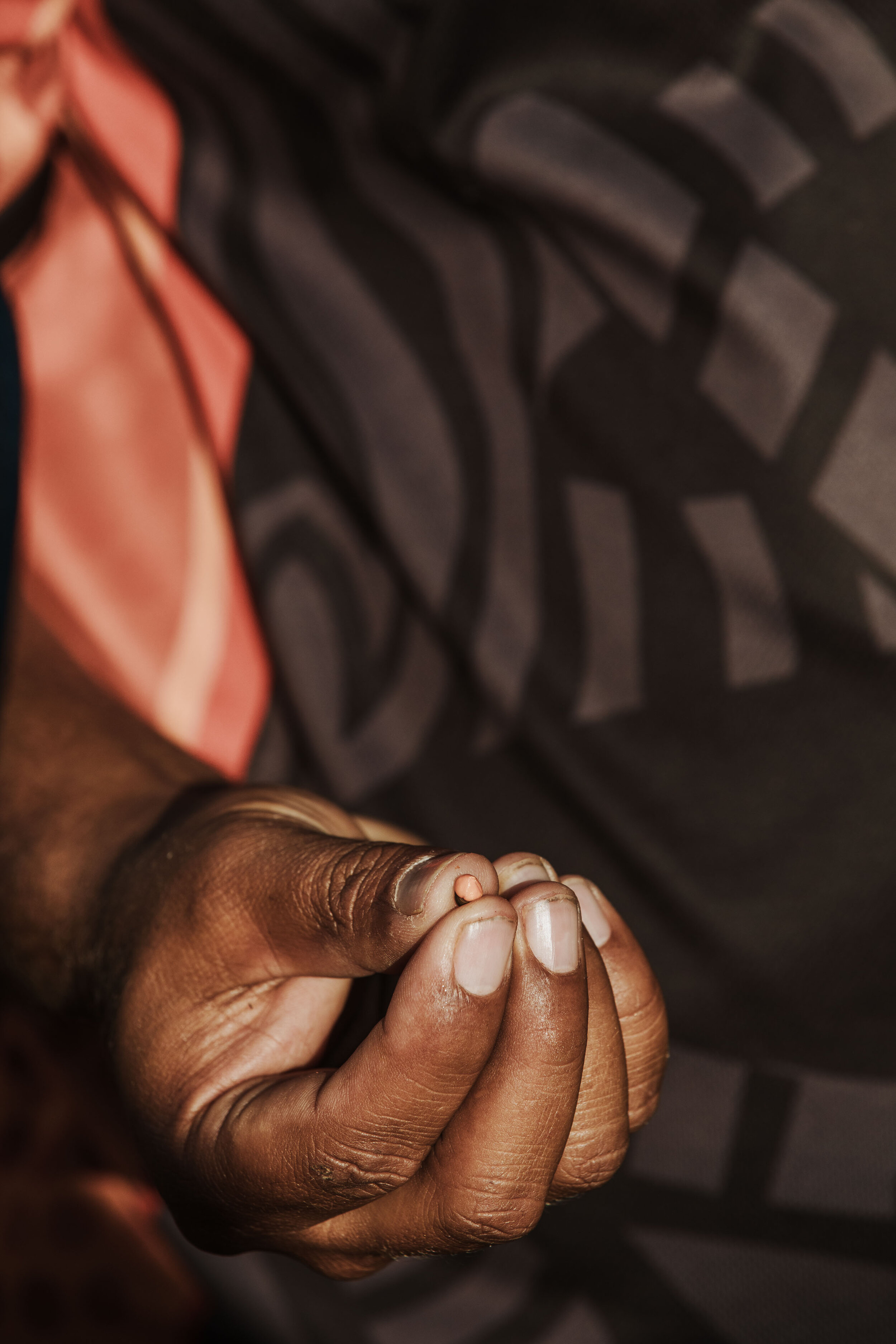
Thundu (Wattleseed). Wattleseed is one of Australia's native superfoods that is also packed with nutritional goodness. It contains potassium, calcium, iron and zinc.
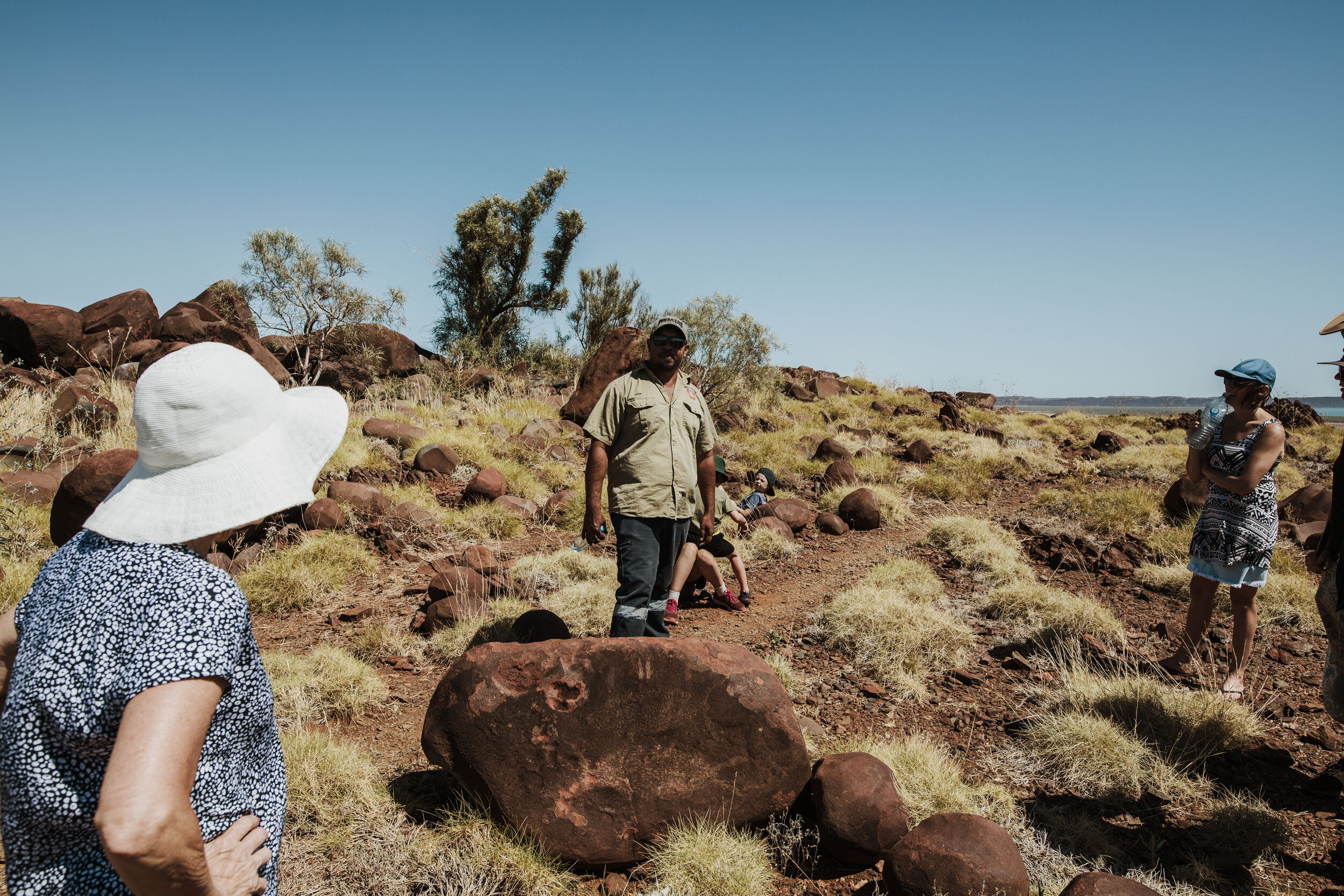
Clinton points out a Trevally and Queenie Rock art.
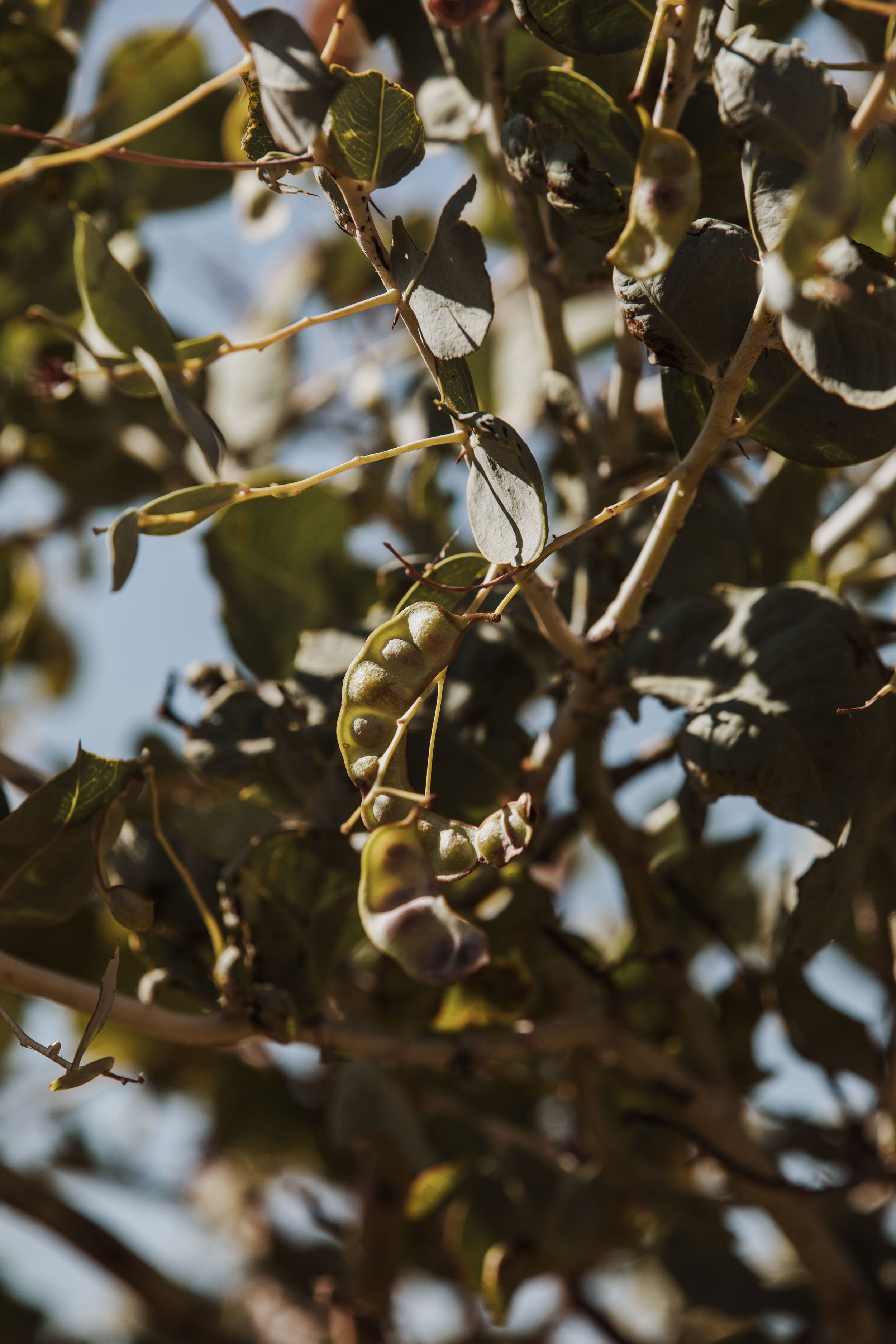
Kanji Ganji. These seeds can be crushed to make flour.

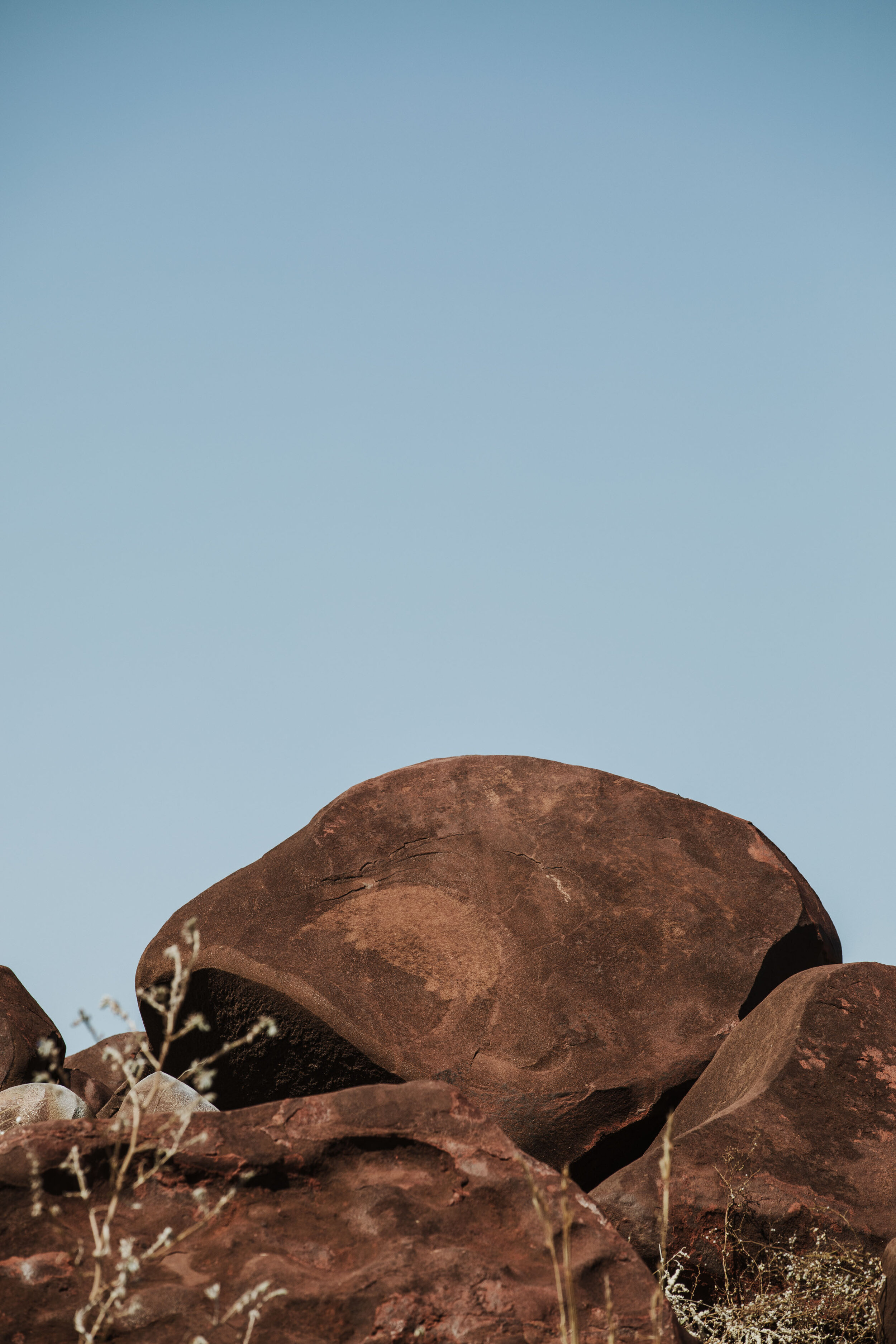
Rock art of a Jiribuga (echidna) at Yaburara.
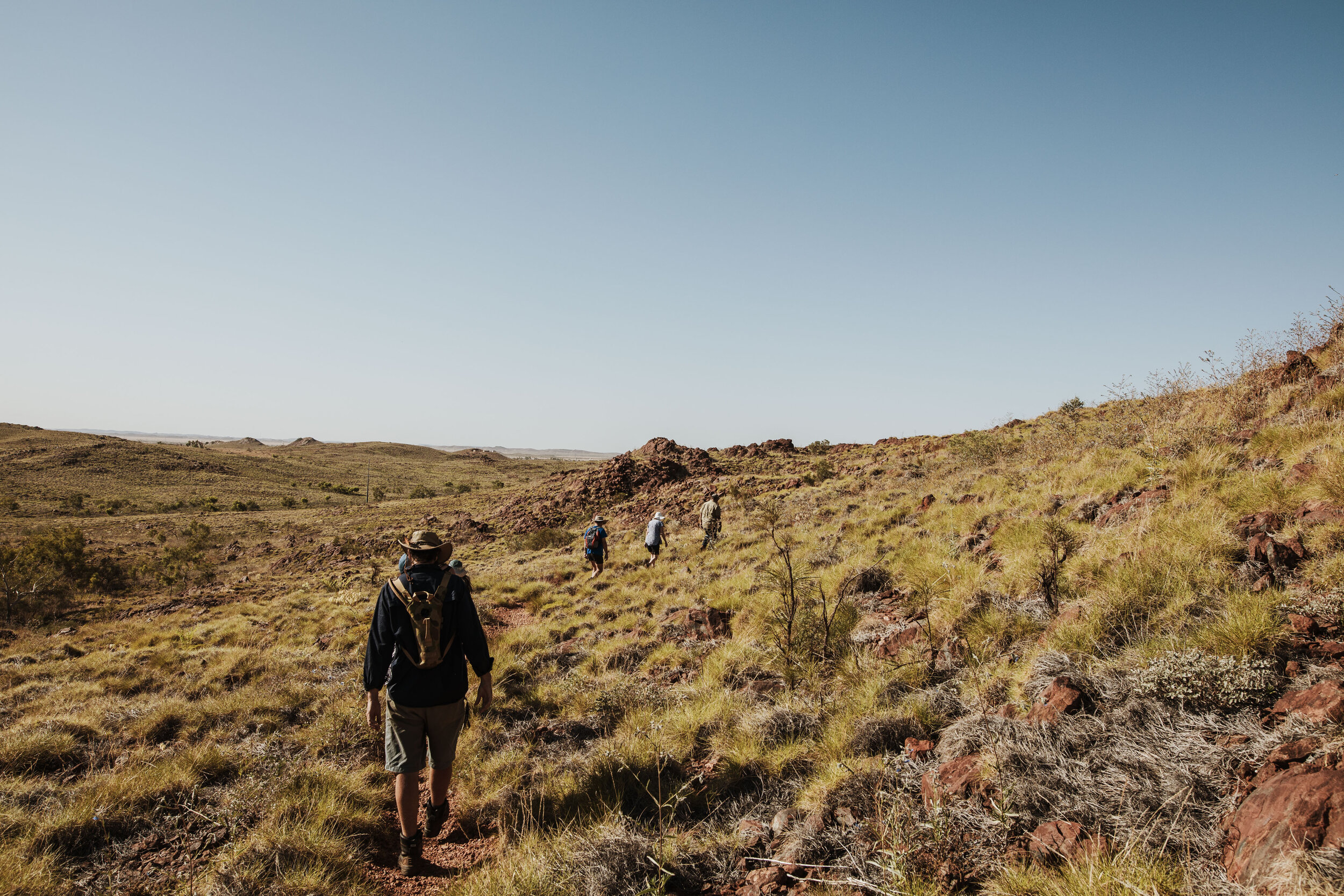
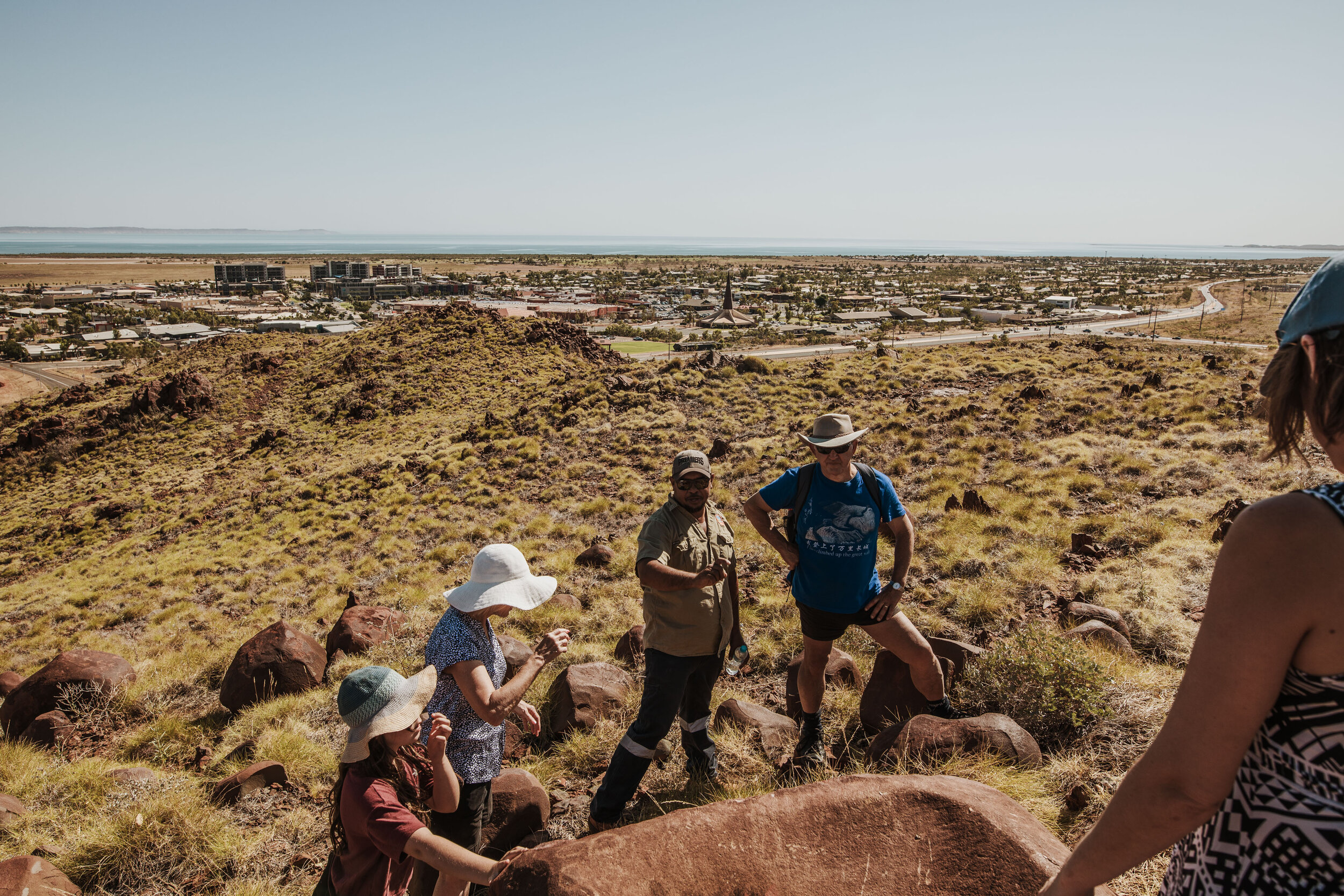
The Yaburara Heritage Trail sits above, overlooking Karratha, Western Australia.

Tharburi (Sandpaper Fig). As the English name suggests, the leaves from this tree can be used for sandpaper.
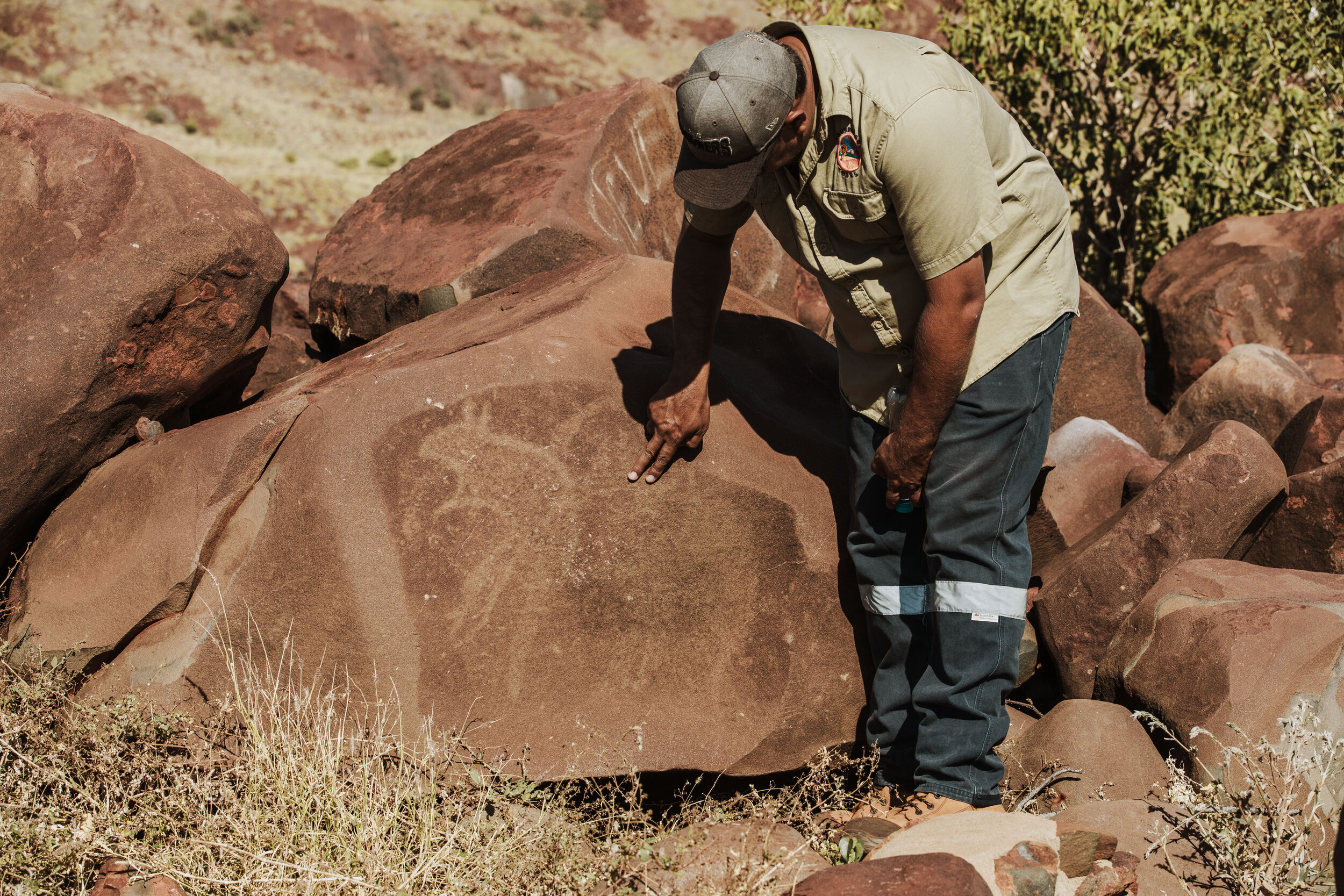
Clinton showing tourists a Mangguru (Kangaroo) at the Yaburara Heritage Trail.
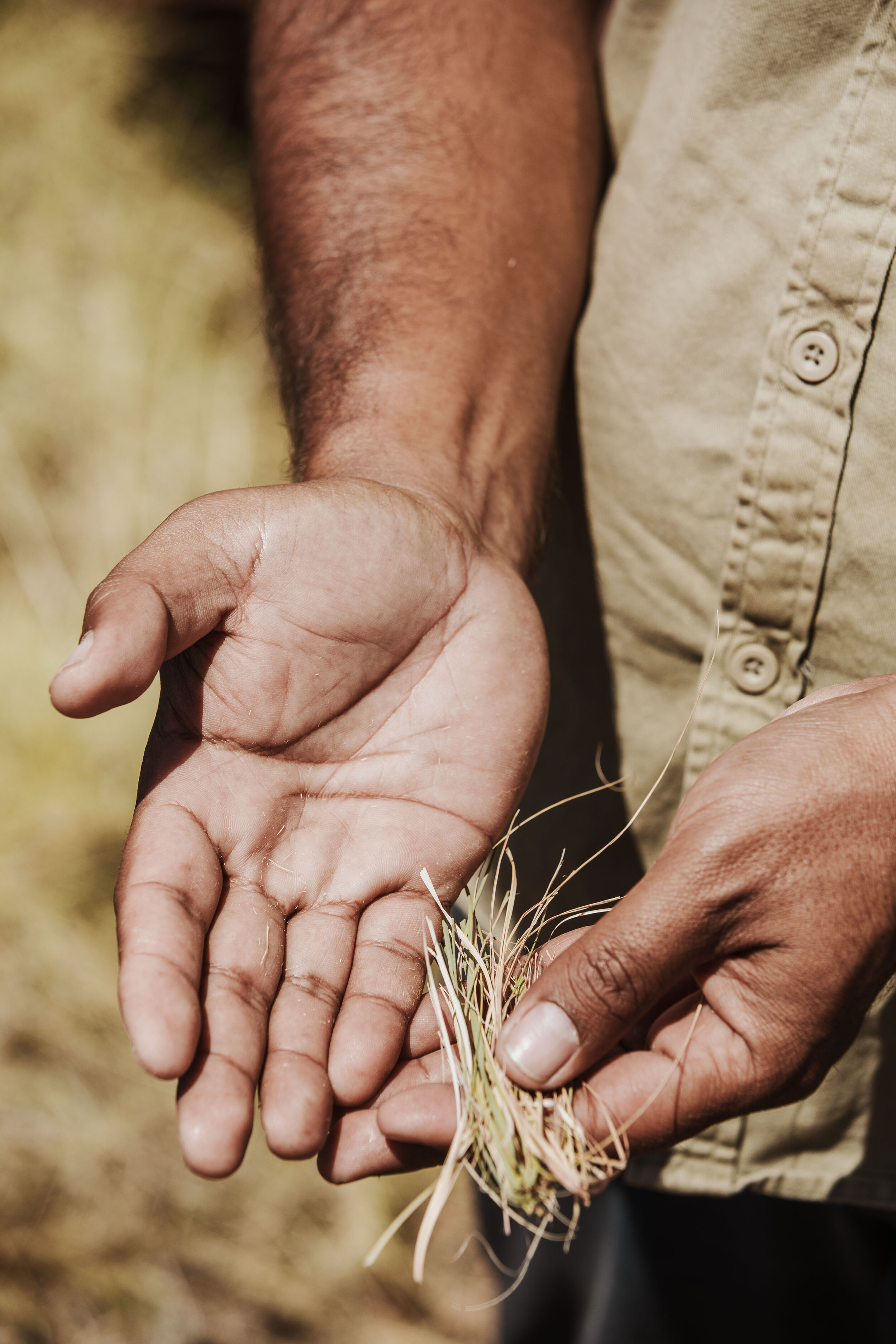
Mathangur (Lemongrass). Said to be stronger than Caffeine, can be used in teas.
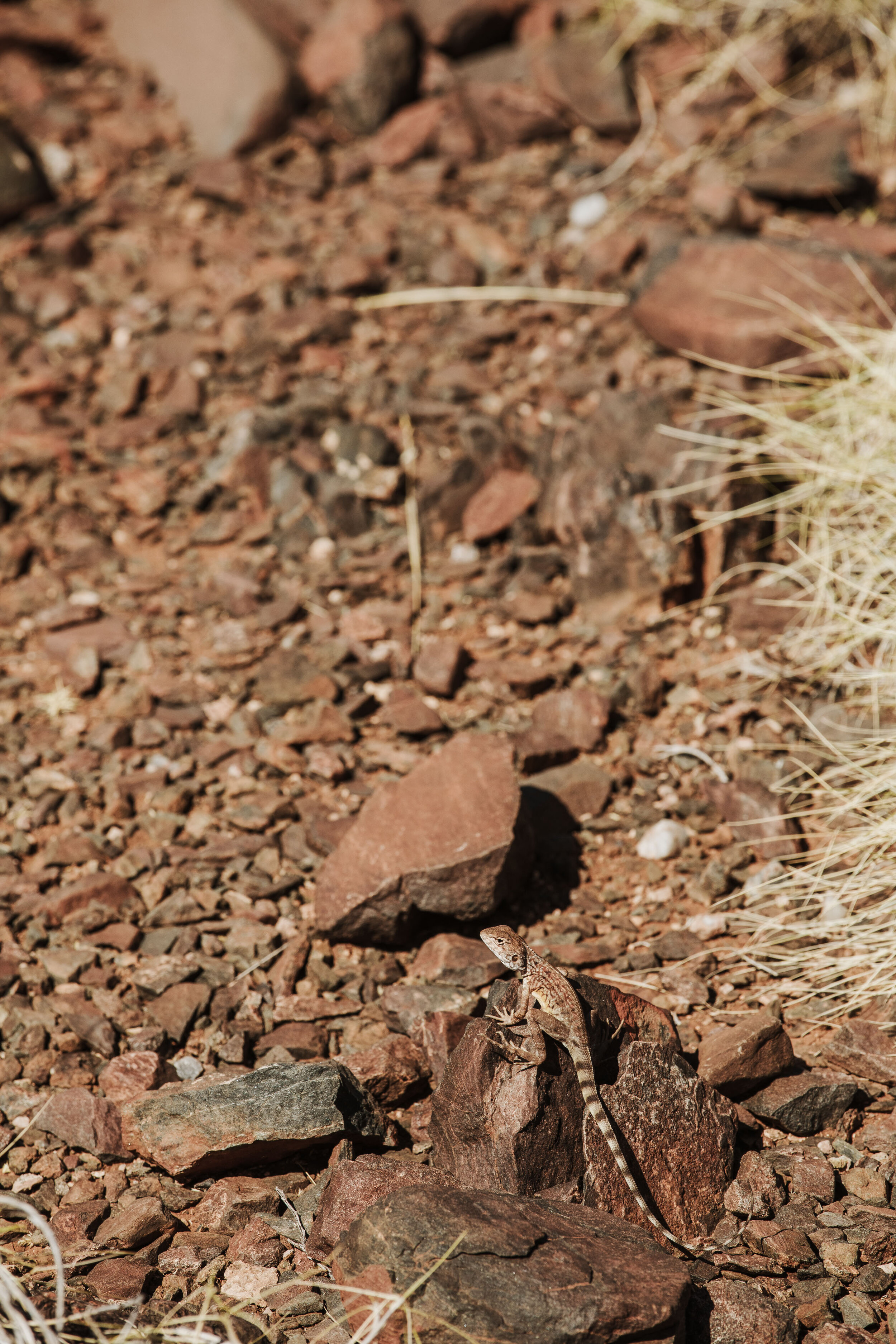
A Marnda Ngatha (Ring Tail Dragon) sitting on a rock at the Yaburara Heritage Trail.

Clinton tells a story about some rock art at Yaburara Heritage Trail.
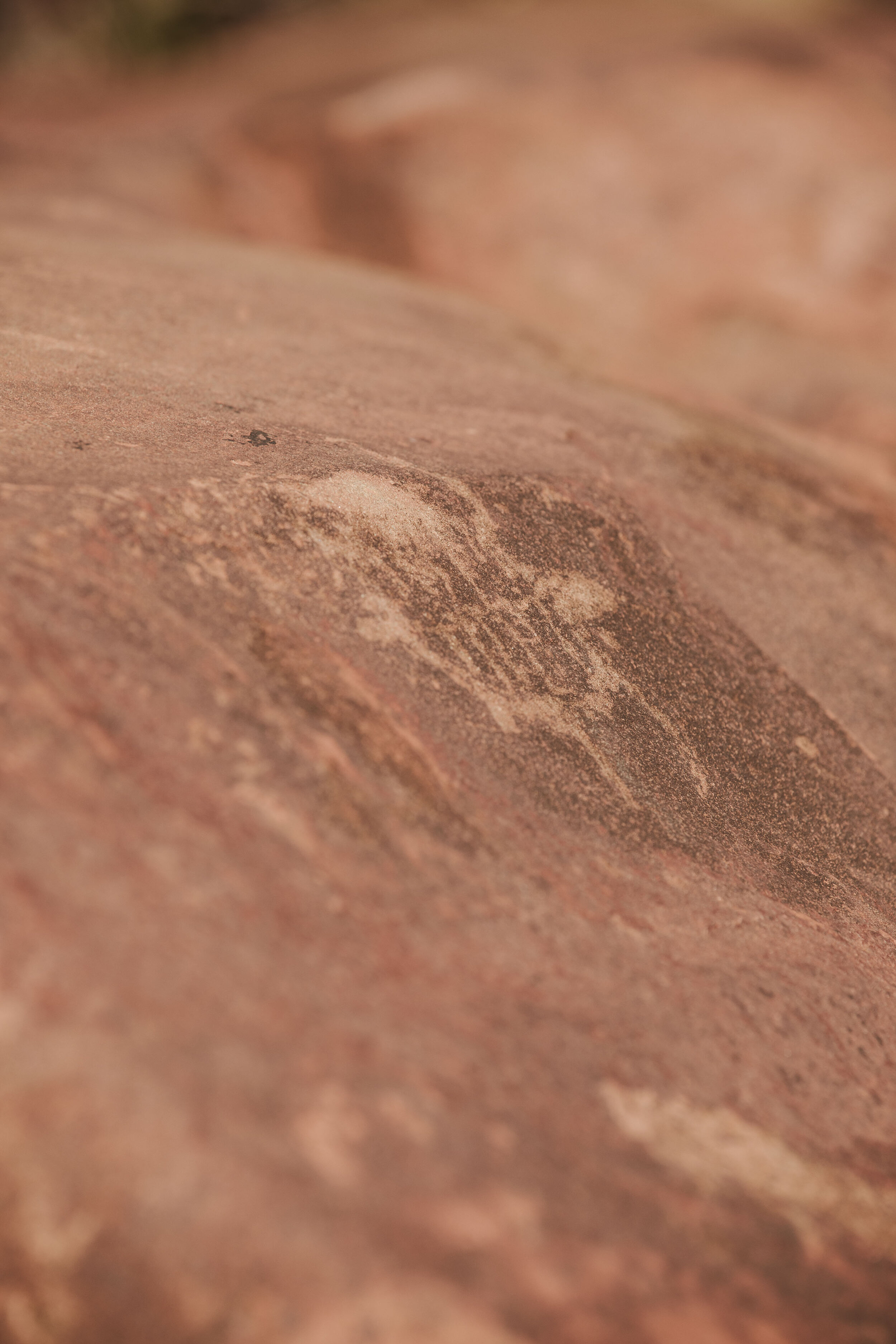
An image of a Thatharruga (turtle). Rock art in these areas can date back to 50,000 years old.

Clinton’s hand.
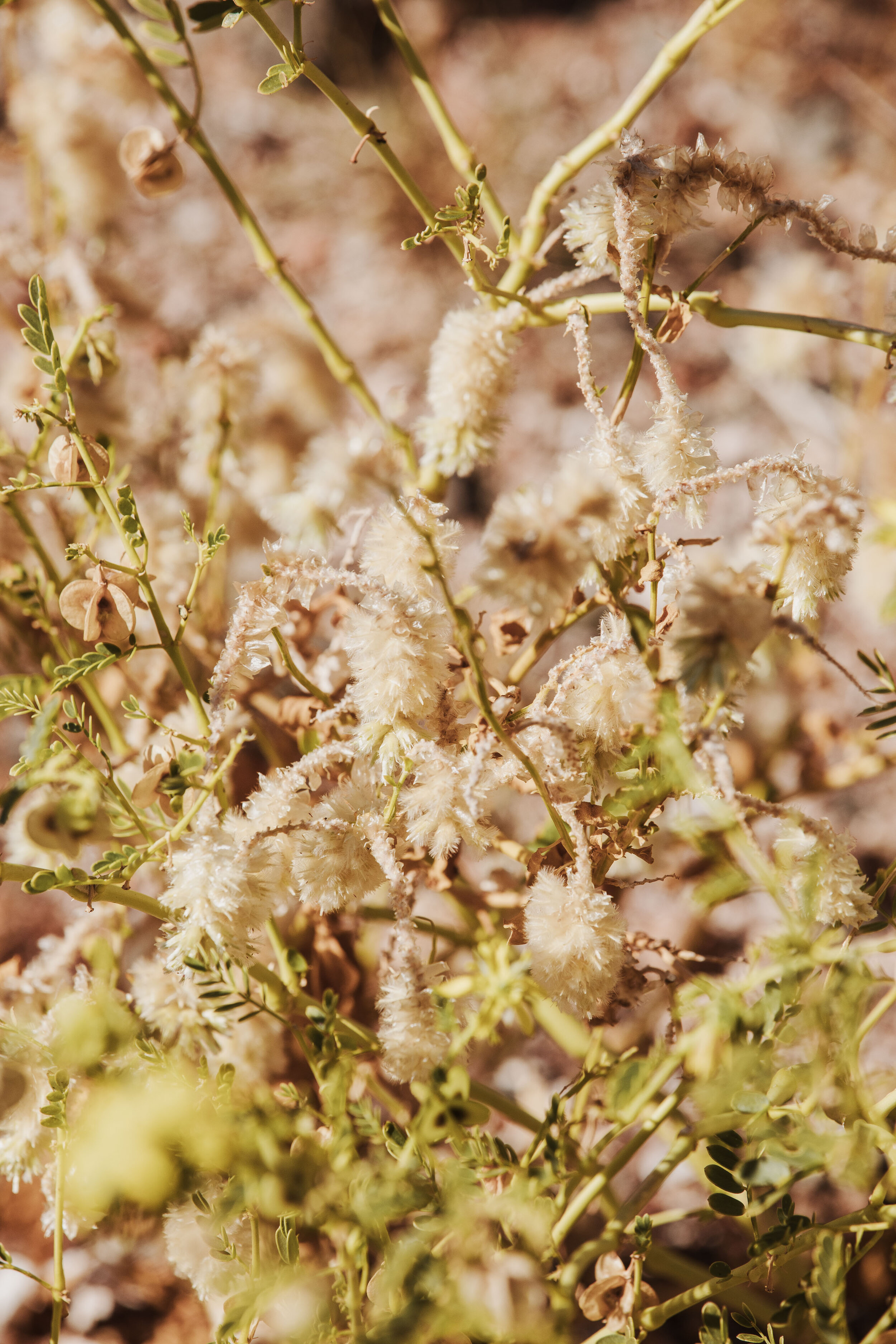
Yellow Mulla Mulla.
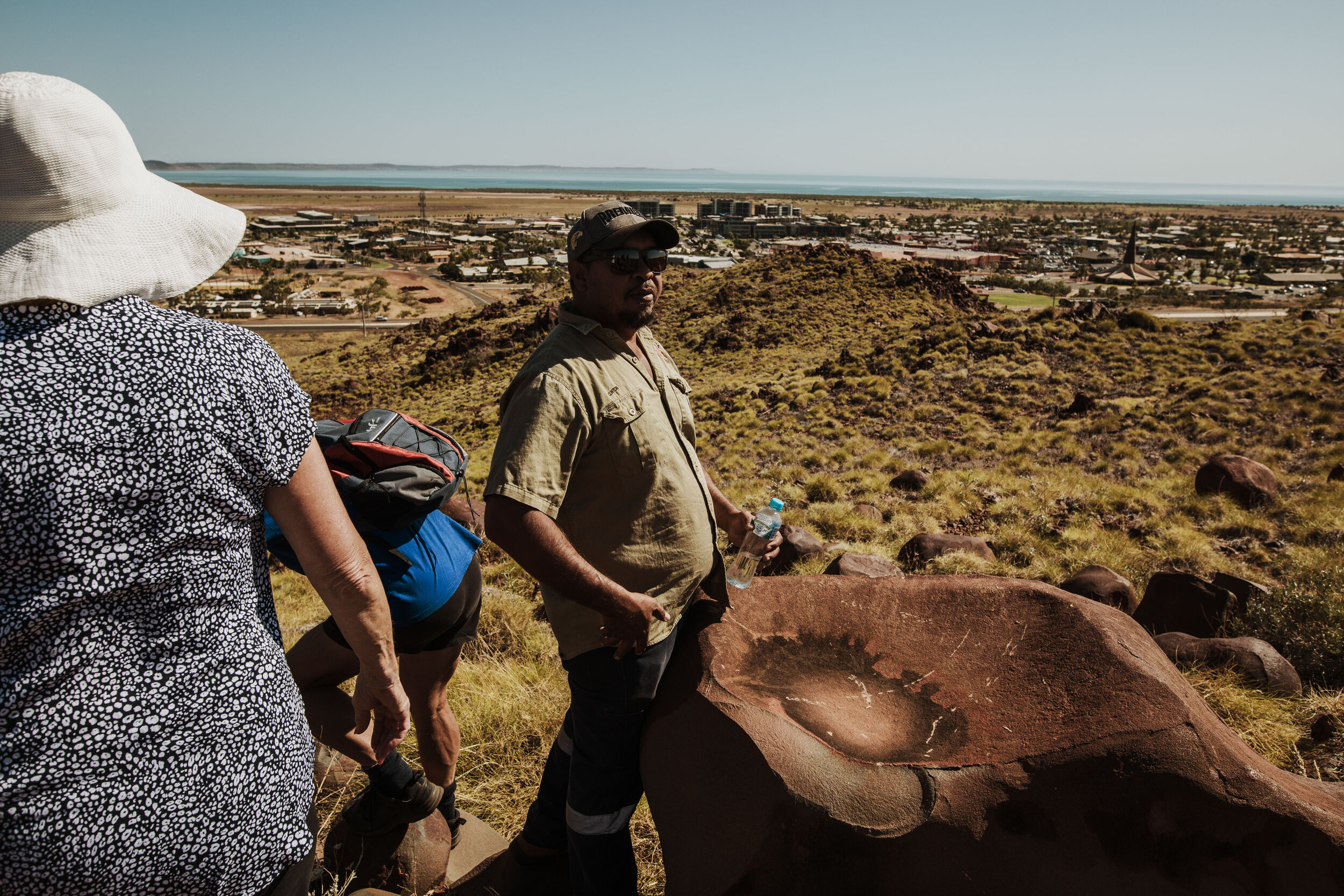
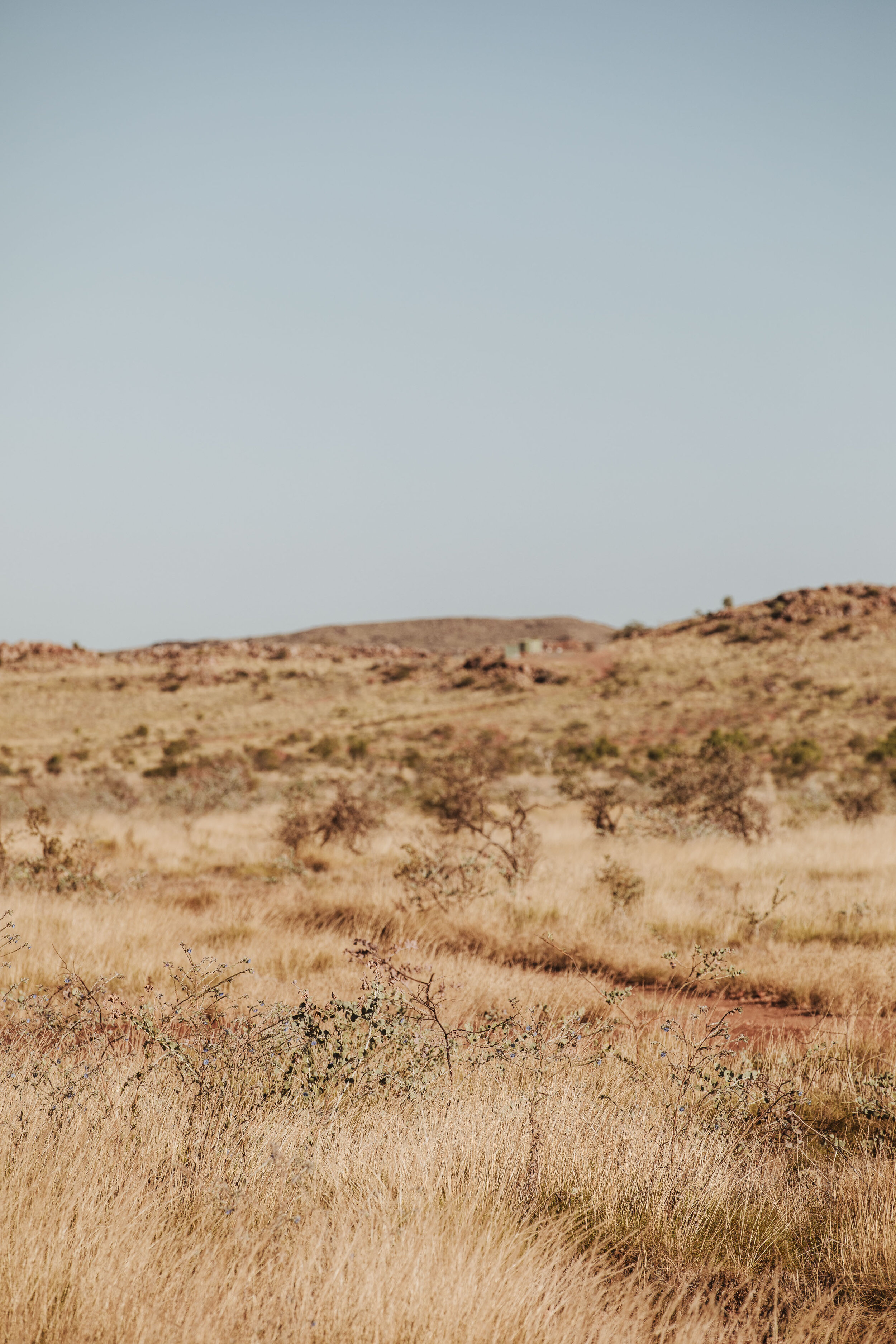
Roebourne Hills.
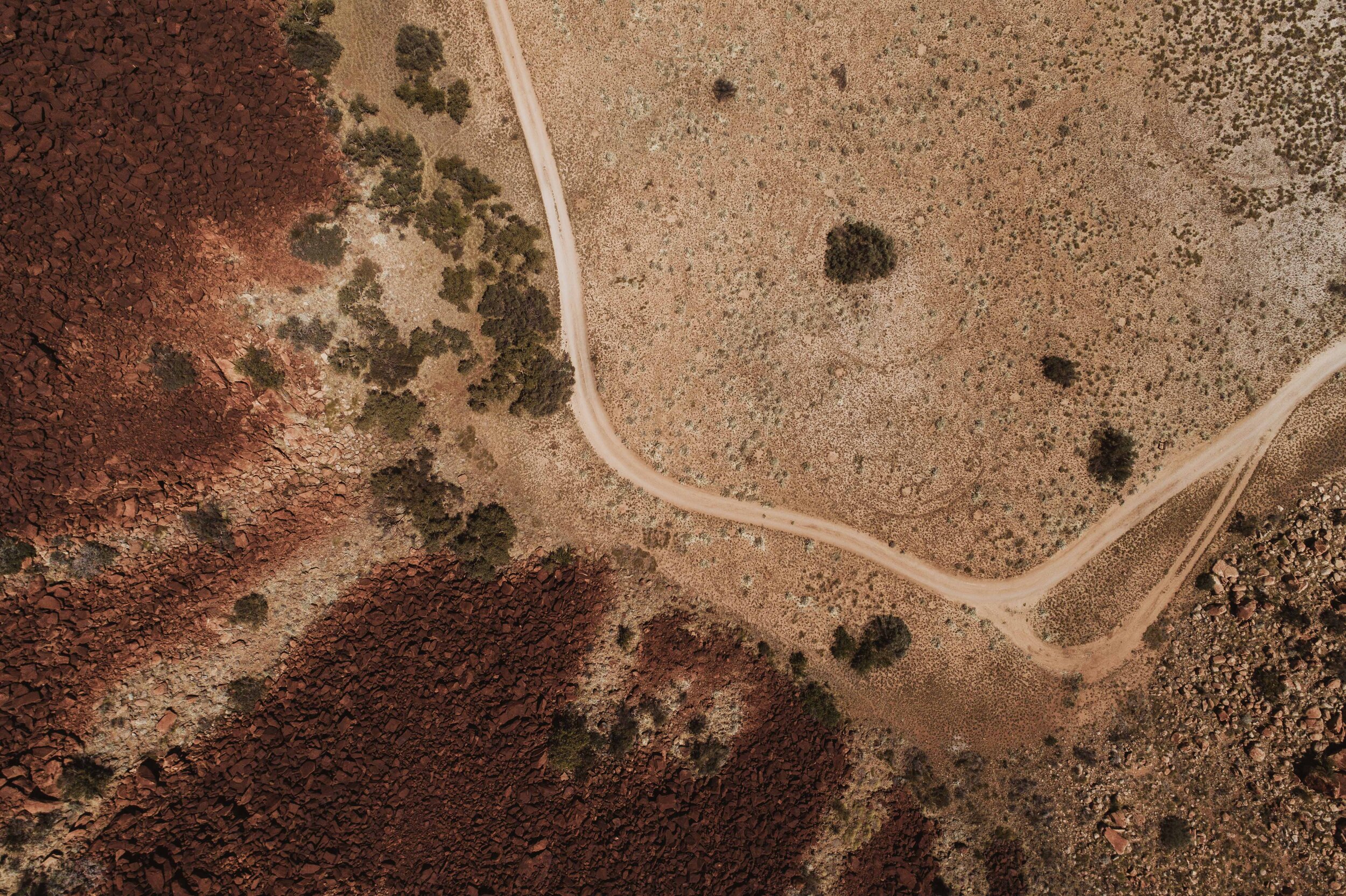
An overhead image of Burrup Murujuga.
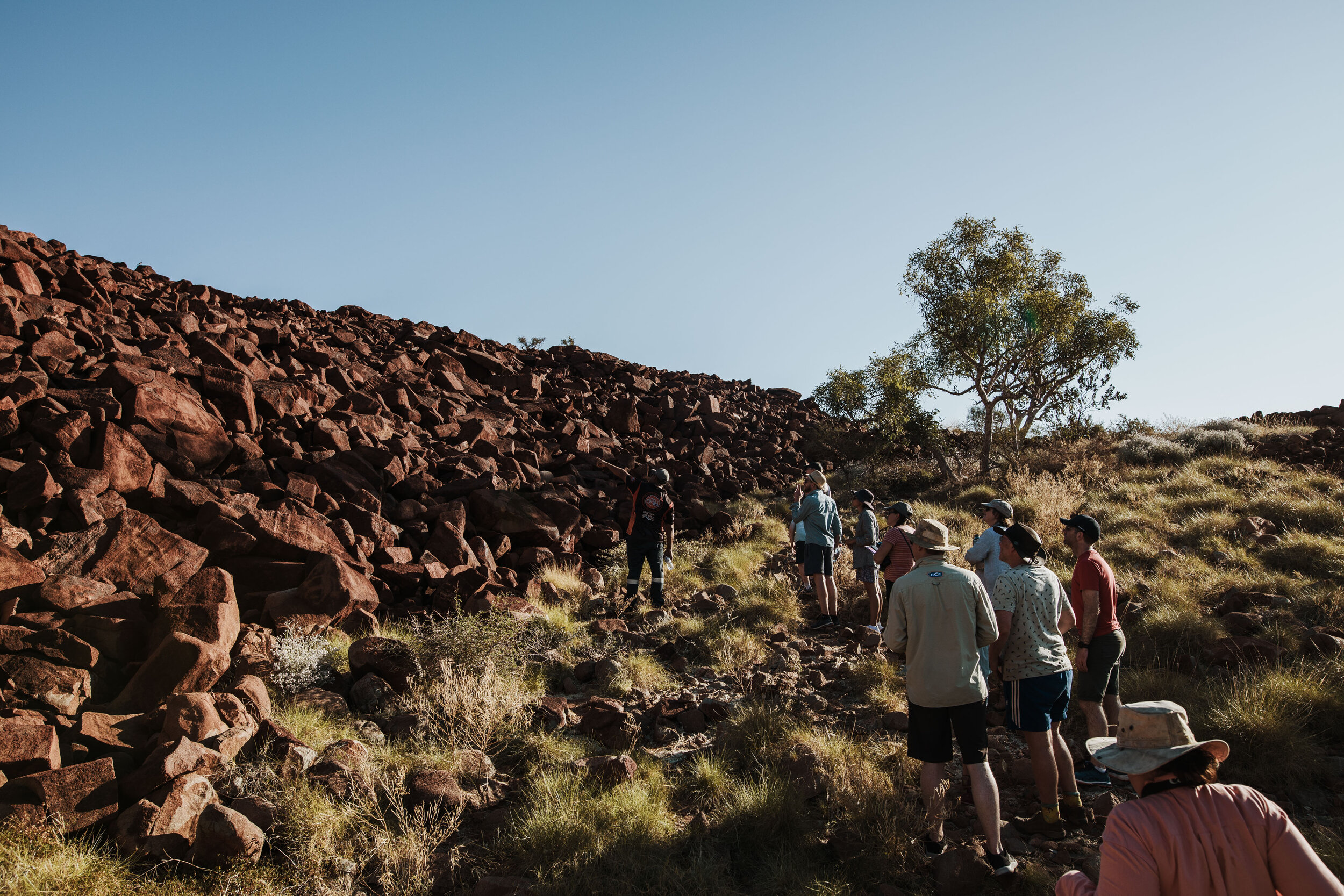
Clinton goes off the beaten track at Ngajarli (Deep Gorge) and shows more Rock Art.
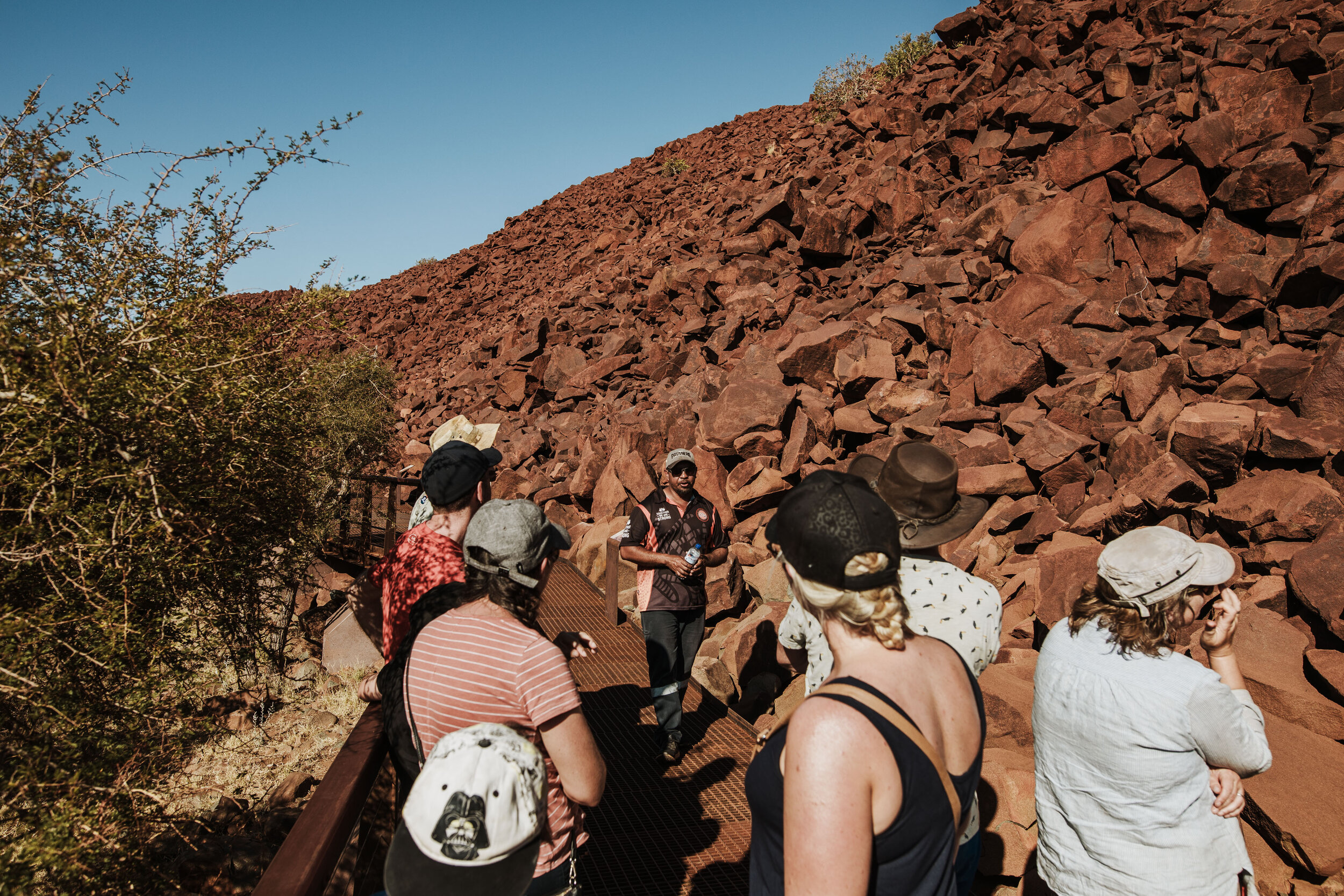
Clinton leads Rock Art Tours through Nganjarli.
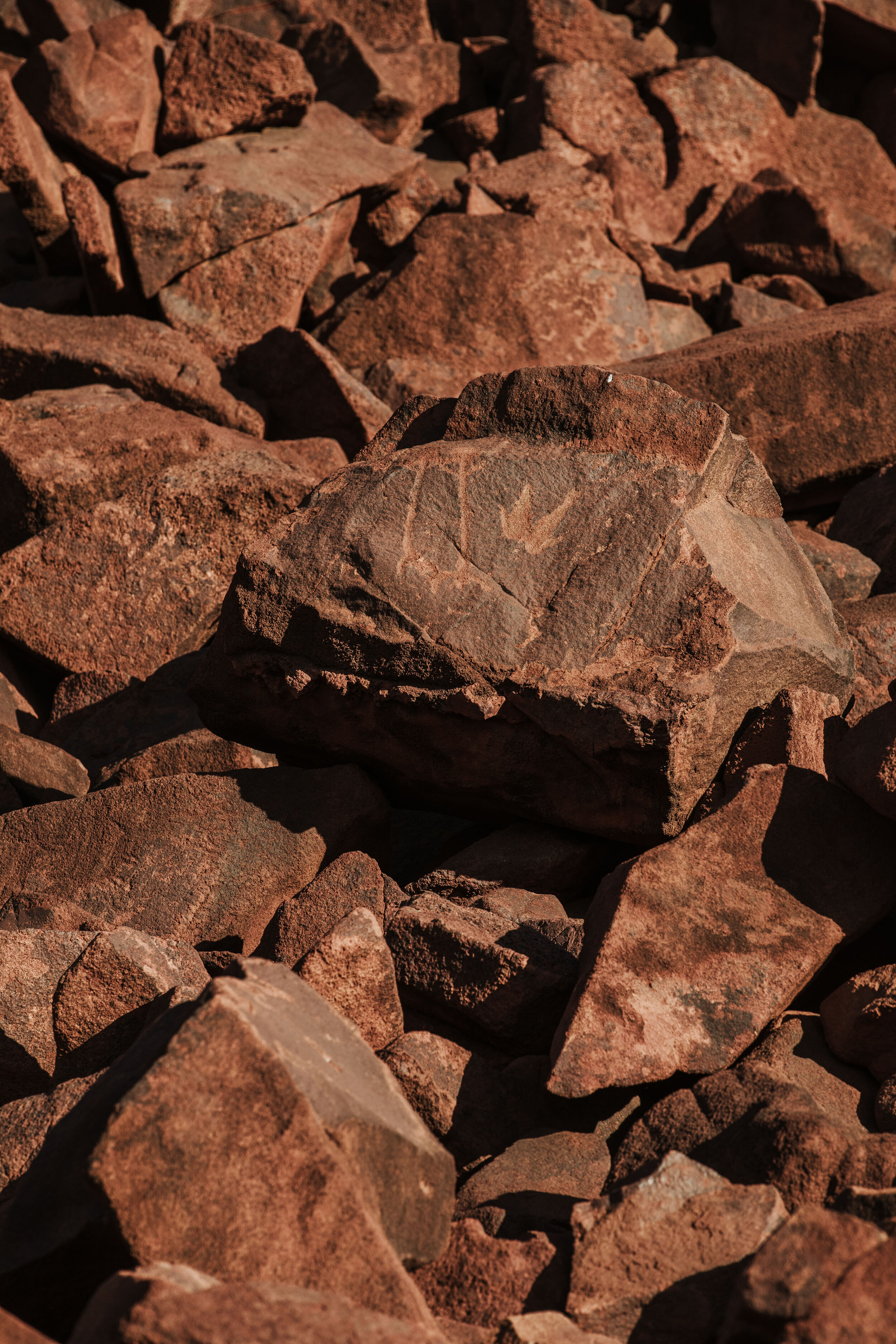
Rock art of animal tracks at Nganjarli.
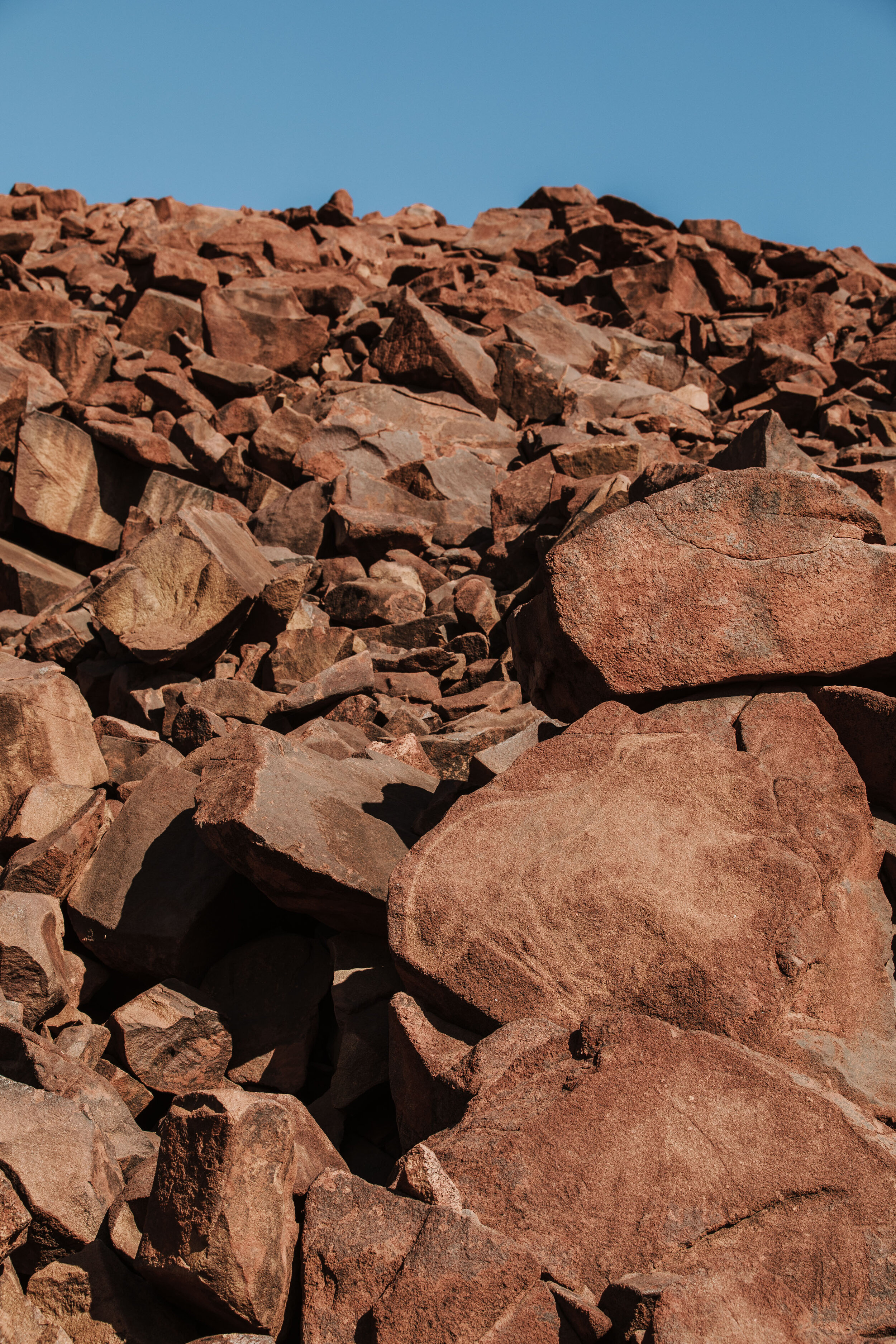
Jankurna (Emu) at Nganjarli. Some of the rock art can date back to 50,000 years old.
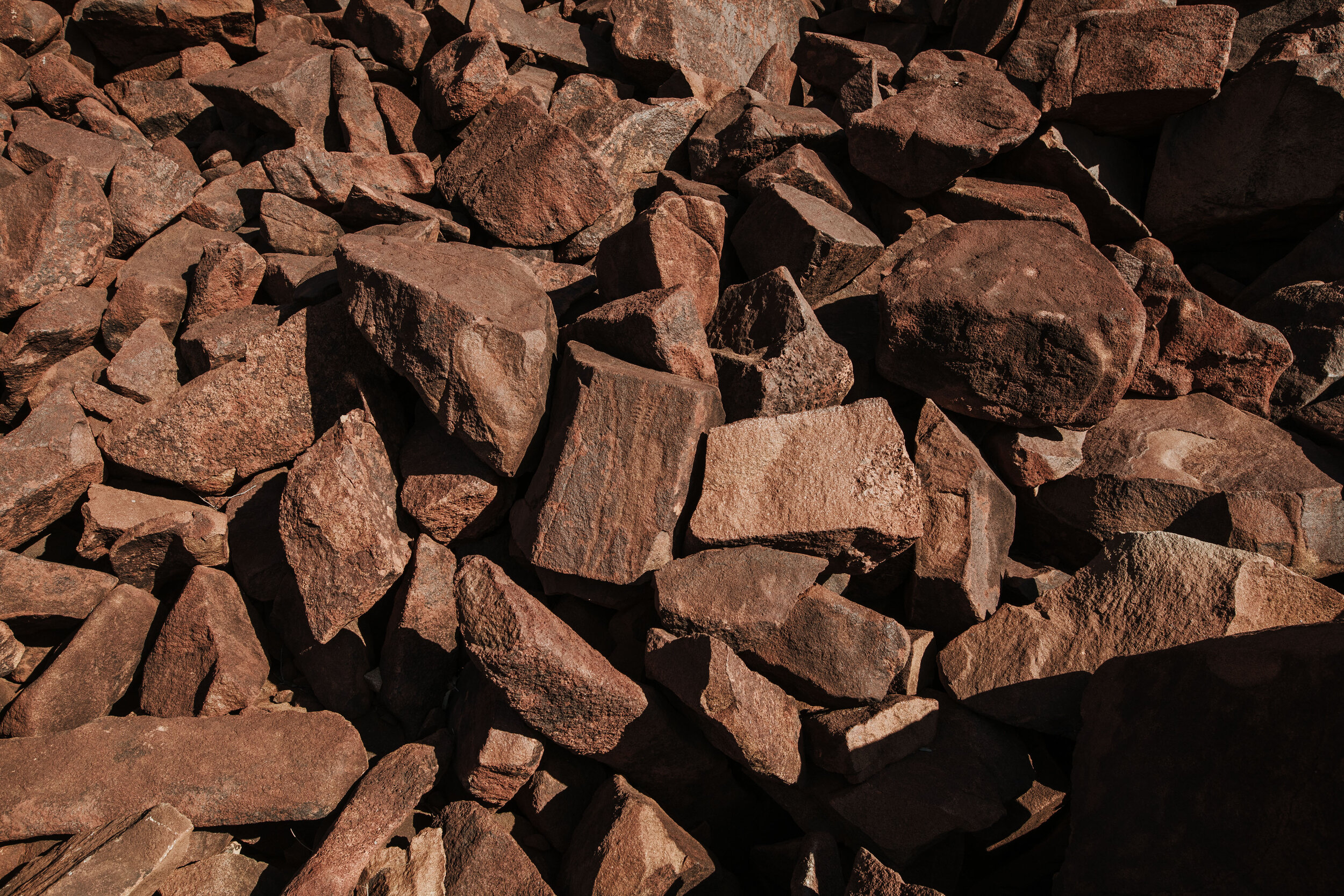
Gardagalgu (Spears) on rocks at Nganjarli.
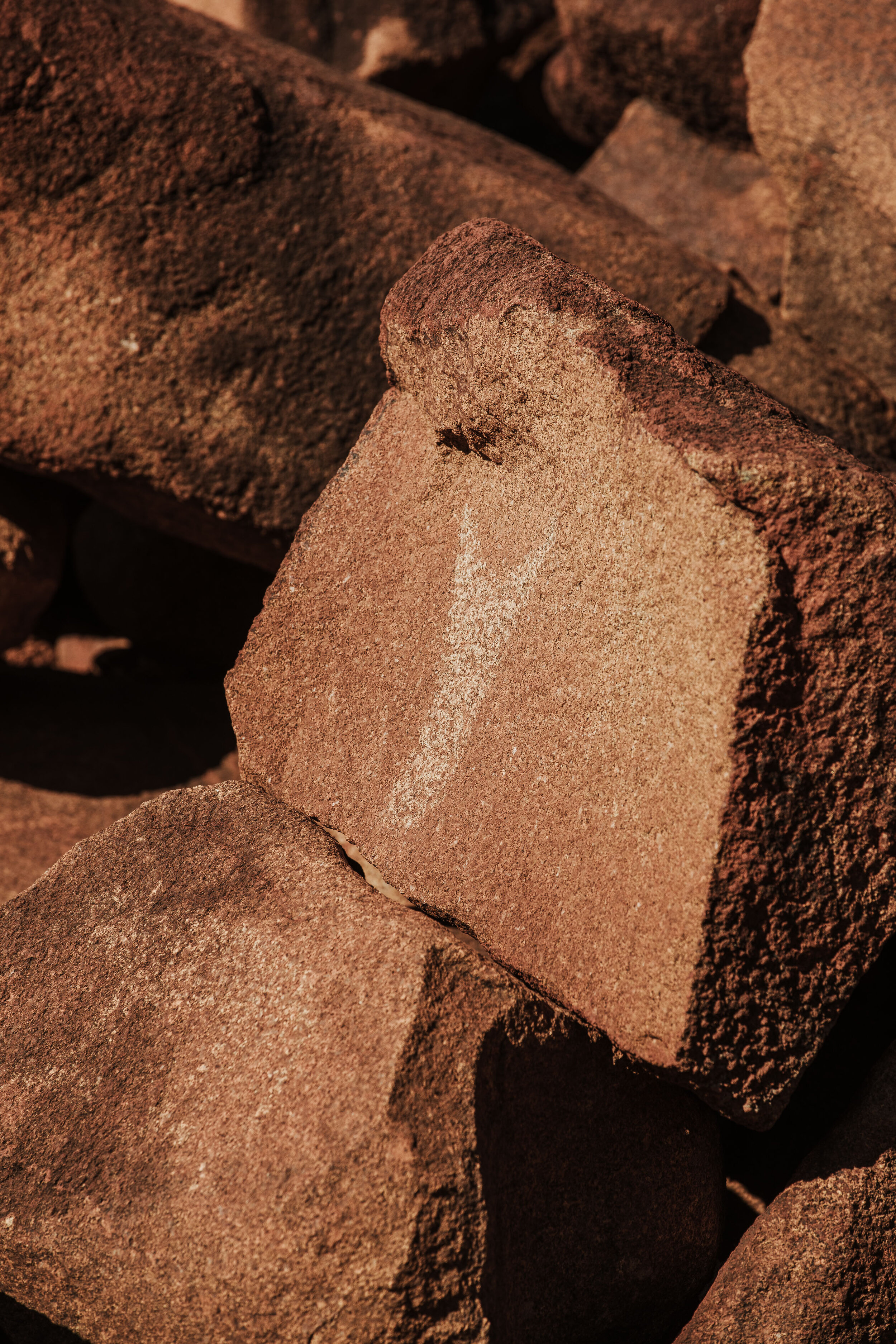
Rock art of a fish tail at Nganjarli.
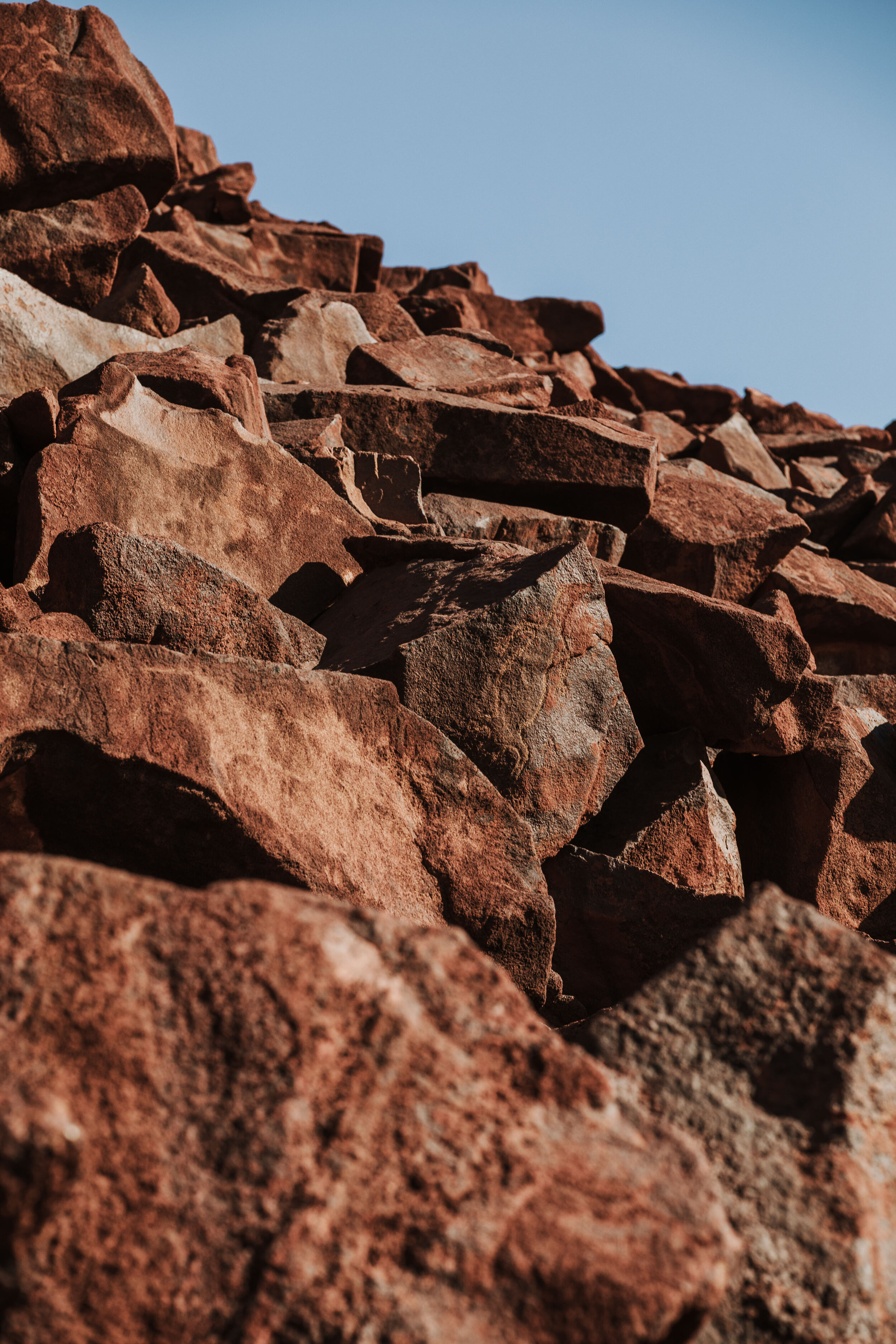
Gurrumurnju (Goanna) rock art at Nganjarli.
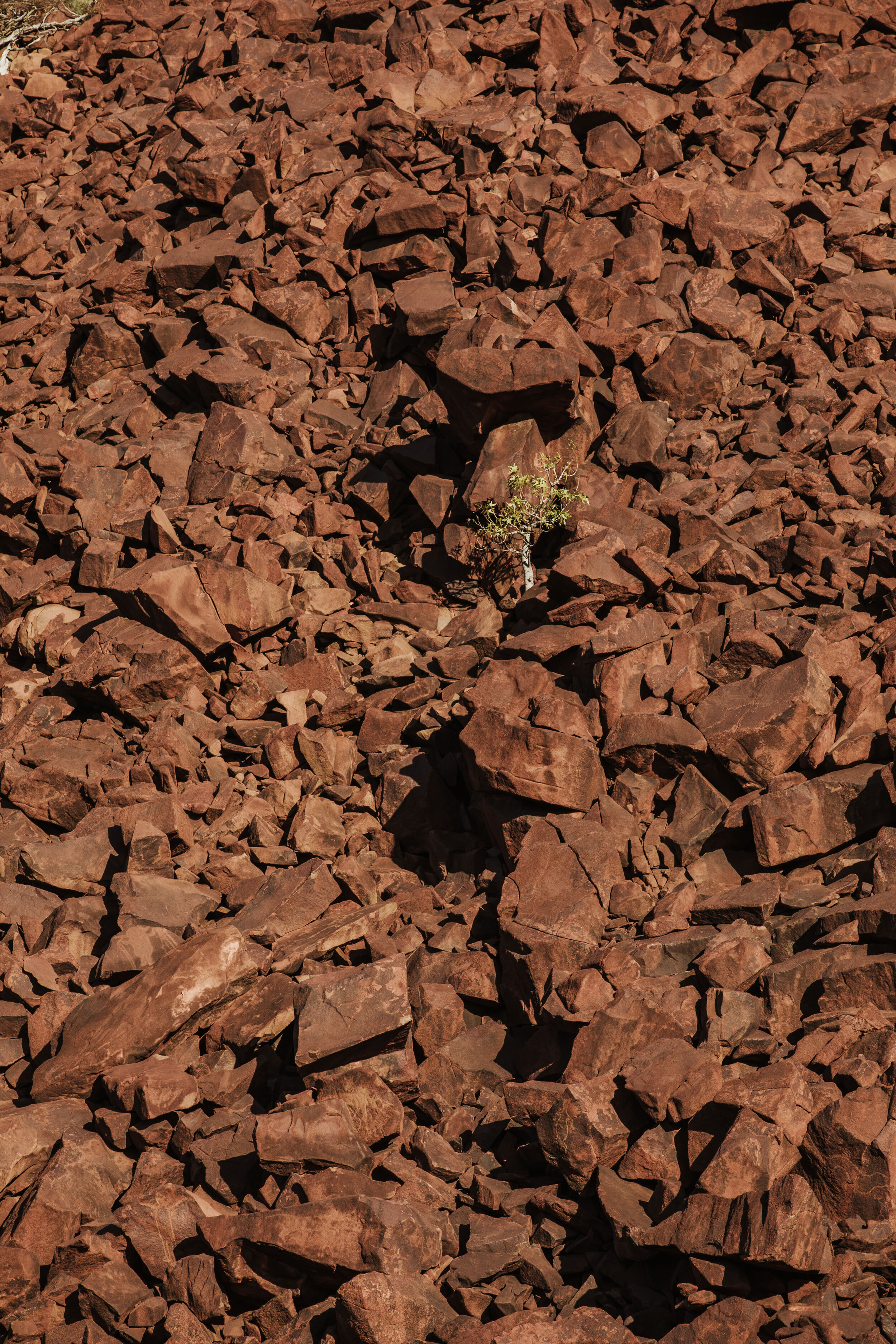
Tharranggurla (Kurrajong Tree). Nestles into the Nganjarli.
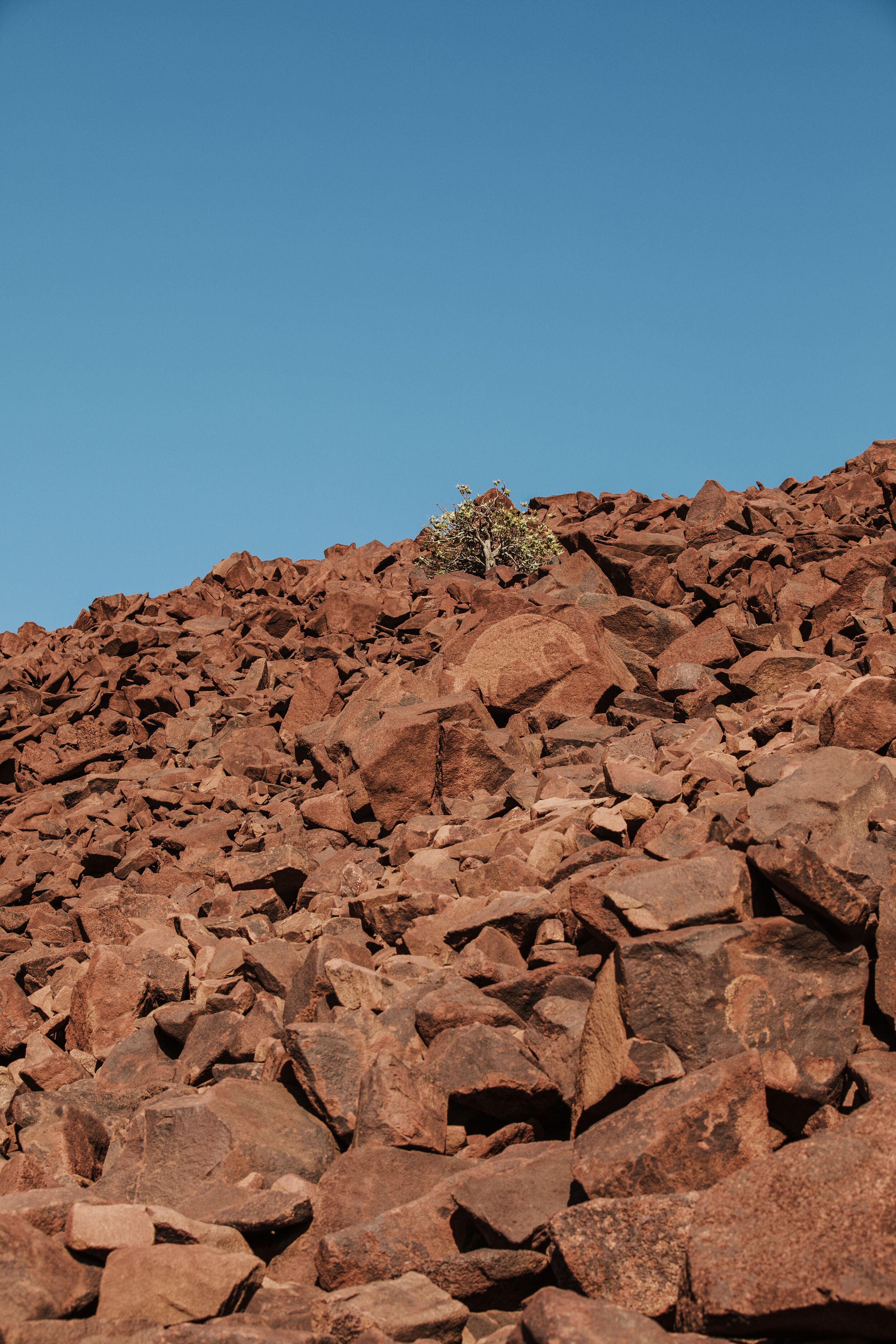
A Mega Fauna Kangaroo, said to roam Australia 40-60 000 years ago.
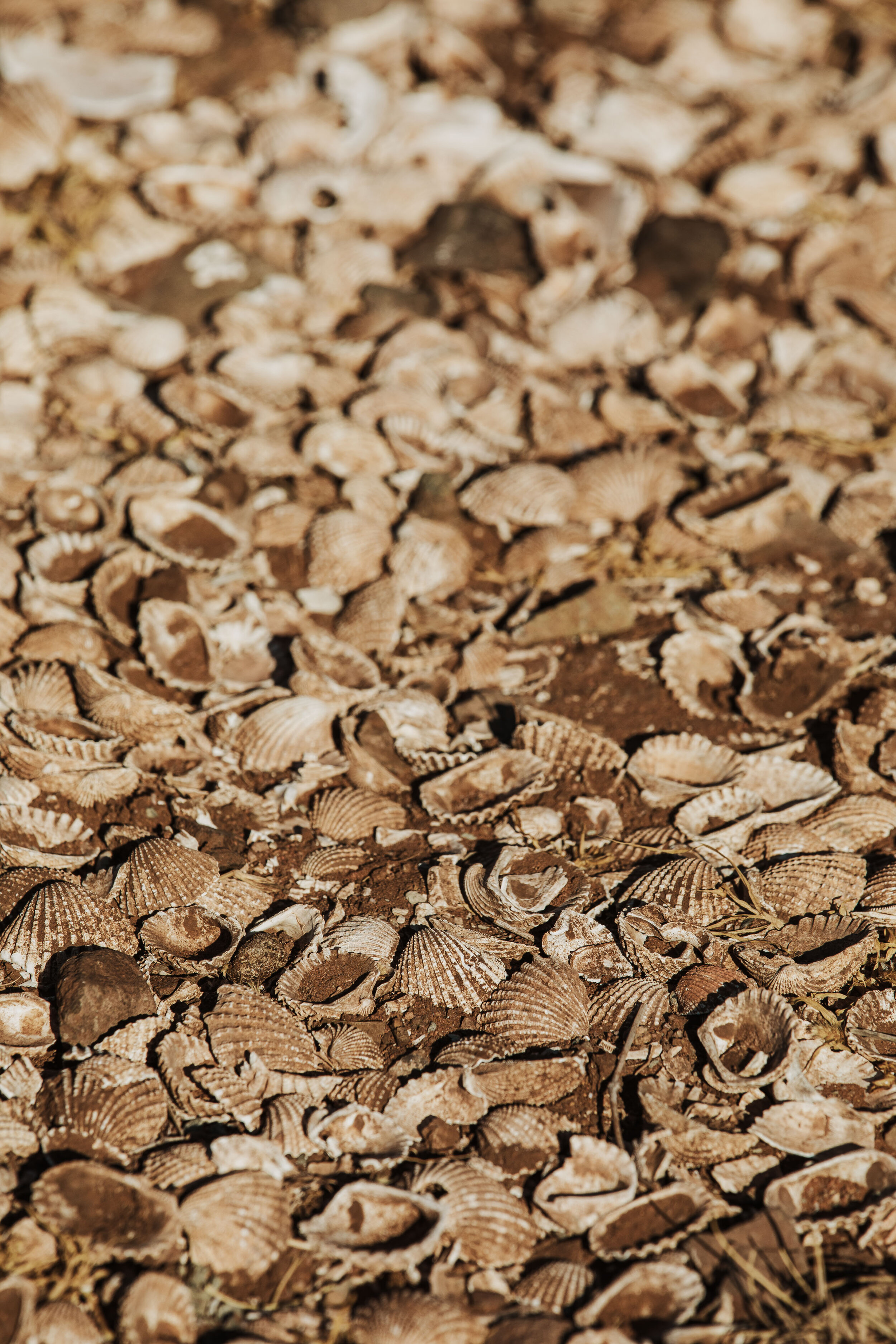
A shell midden are distinct concentrations of shall and contain evidence of Aboriginal hunting, gathering and food processing.
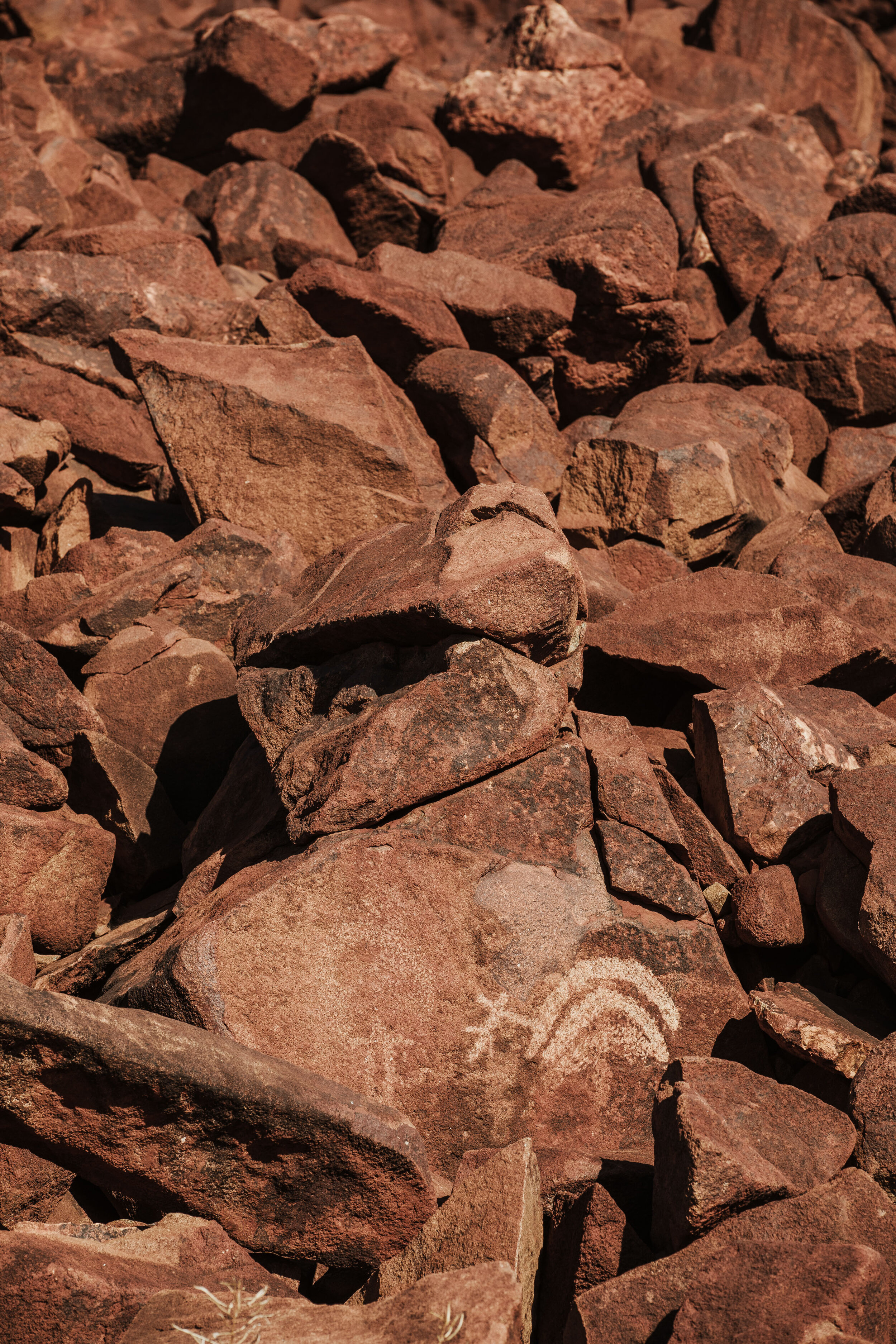
Rock art at Murujuga.
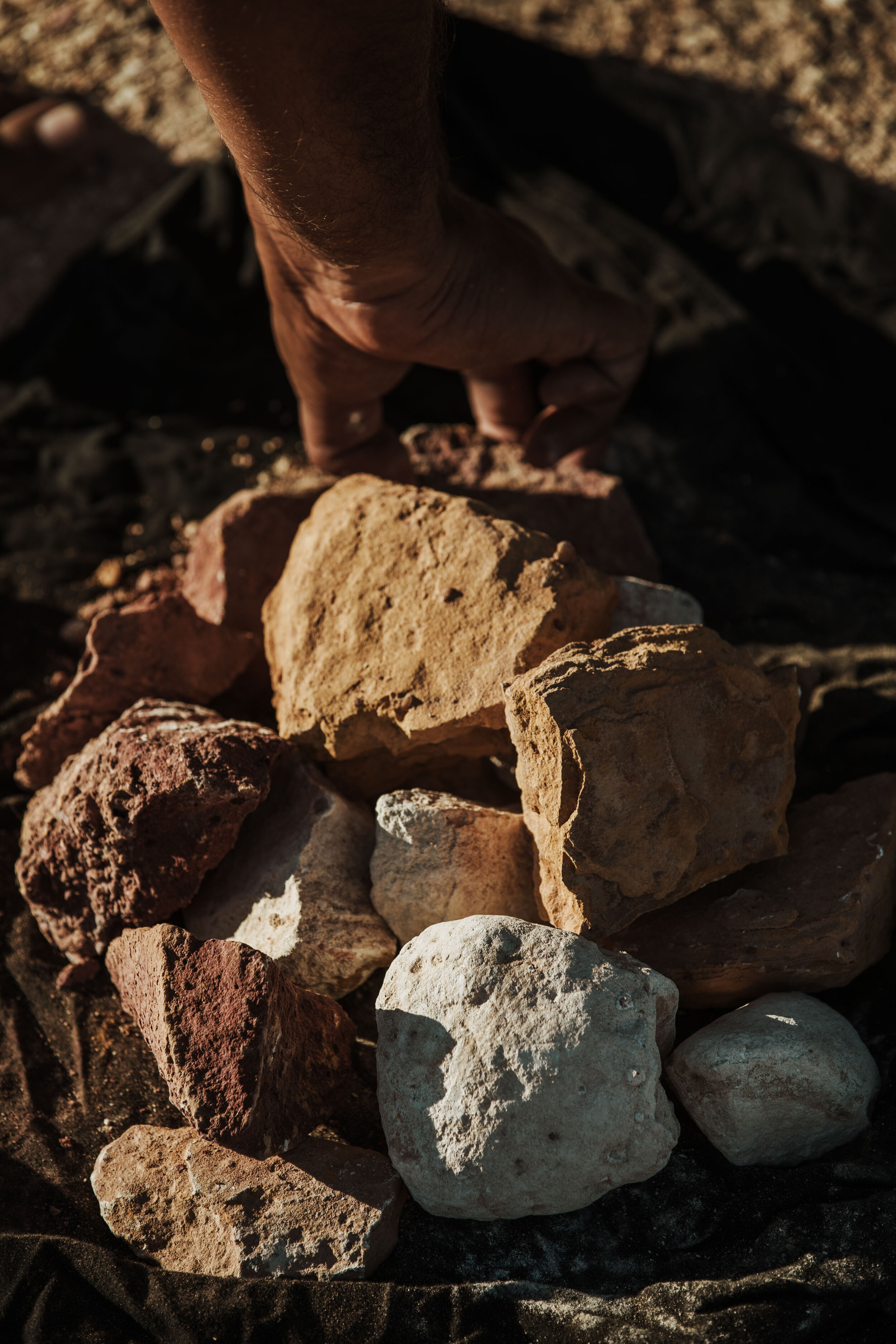
Gurnan (Ochre). Predominately used through the Millstrem Chichester area.
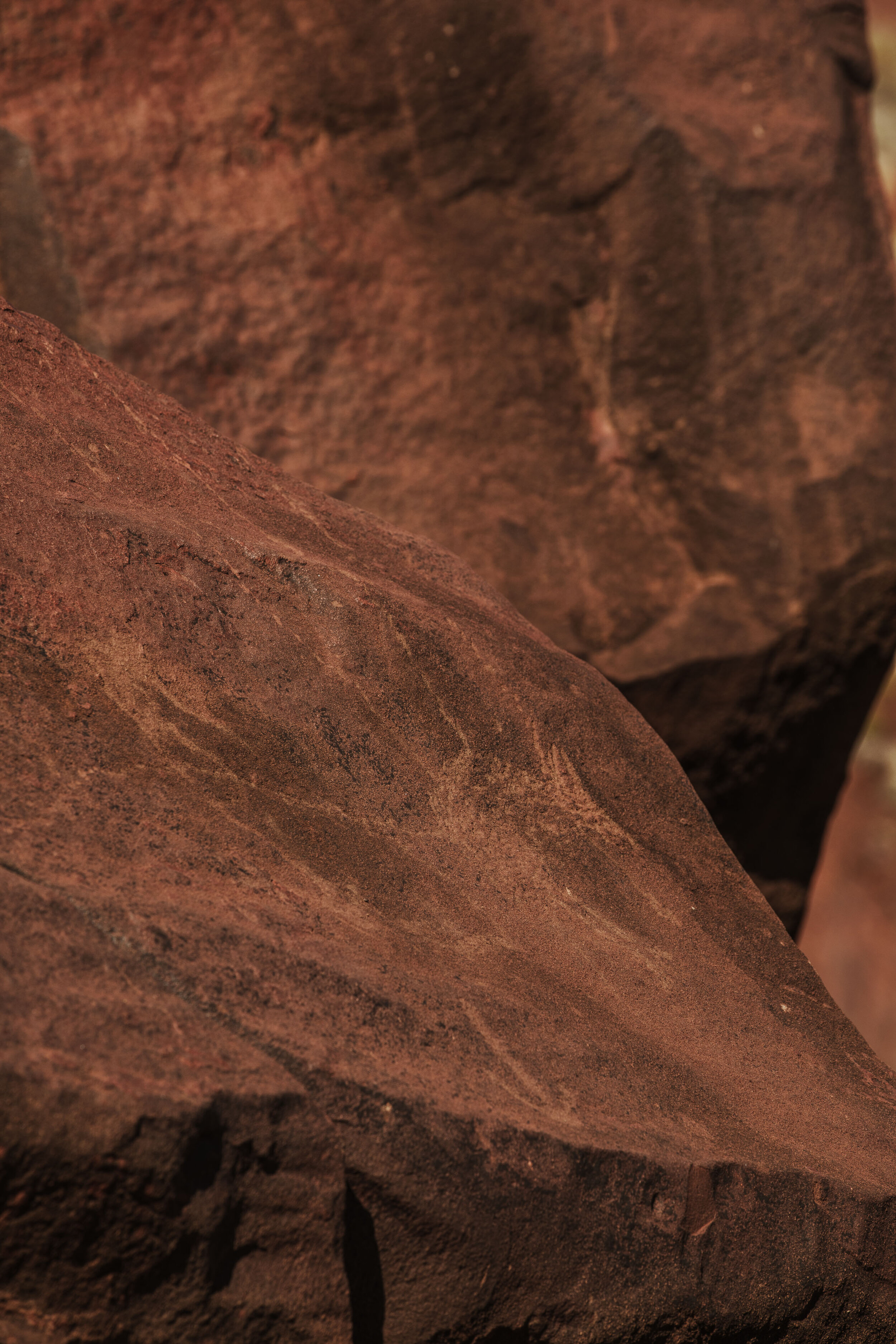
Rock art depicting a speared Kangaroo at Murujuga.
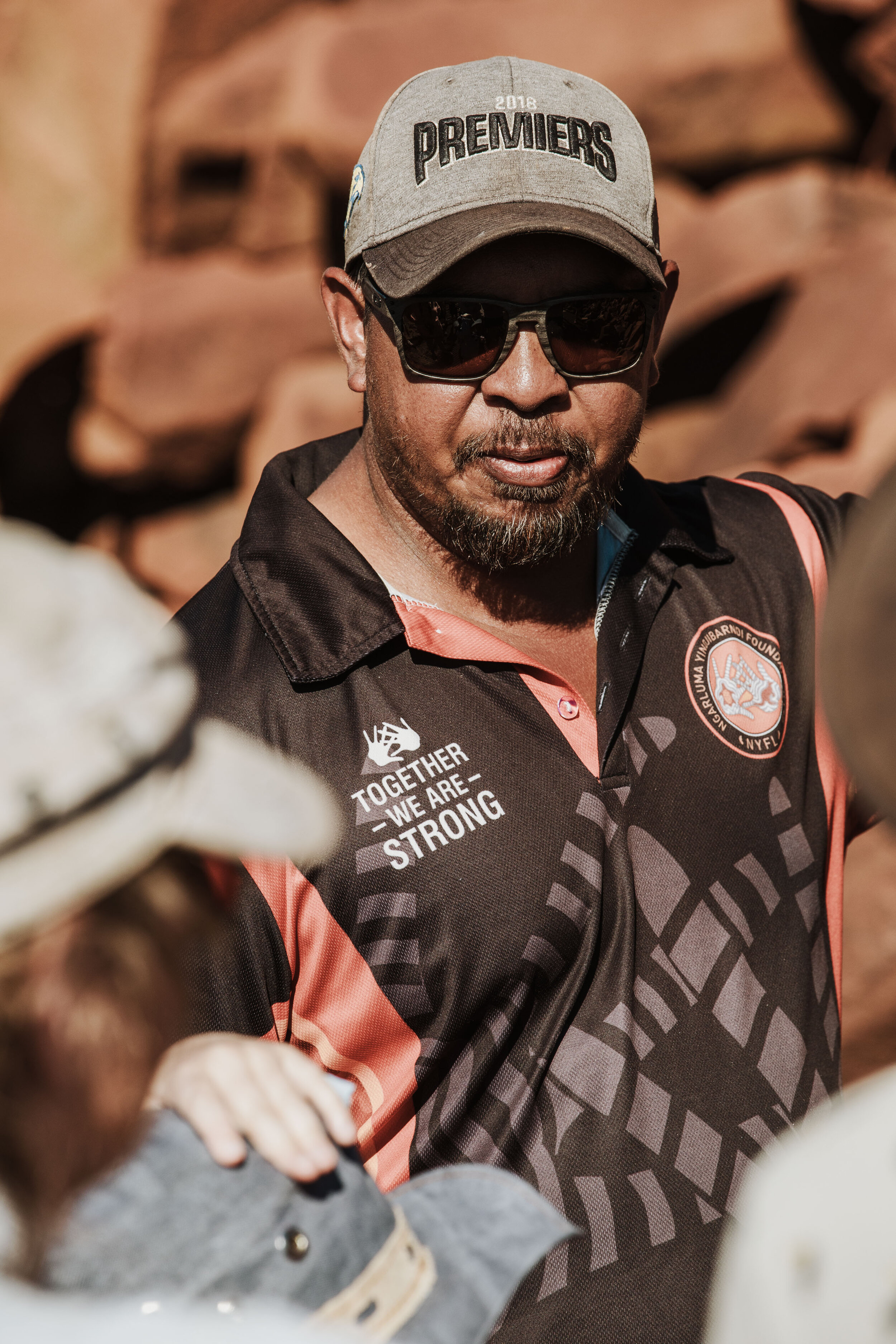
Clinton talks about the rock art at Murujuga.
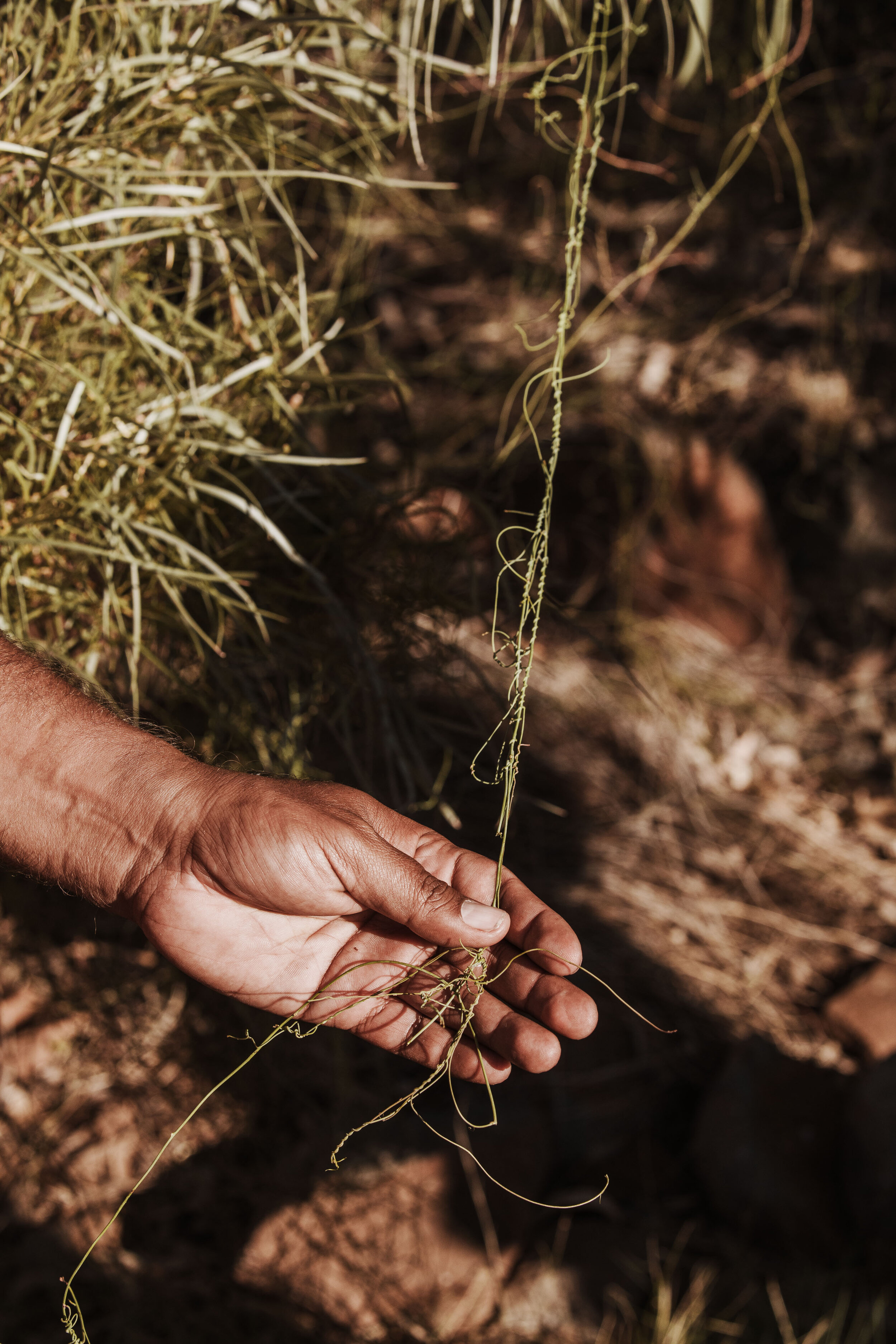
Mandarrangu (Dodder). This plant has medicinal purporses and is used to treat urinary tract, spleen, psychiatric and hepatic disorders. It is also used to cancer, depression and pain.
Two ancient archaeological sites were found—underwater—in 2019, and reported in 2020. They date back to 7,000 and 8,500 years ago, when water inundated the dry land where they sat. They are the first submerged sites of Aboriginal cultural heritage found on Australia’s exceptionally broad continental shelf.
Archaeologists believe that these underwater sites are just the first of many; there could be millions more artifacts out there on the seabed. Around two million square kilometers of land around Australia was lost to rising seas after the last ice age, about the same area as modern-day Mexico. The scientific thinking echoes Indigenous lore: that these now-submerged landscapes, often called sea country, hold some of Australia’s oldest histories.
You can see more or book a tour with Clinton here.
